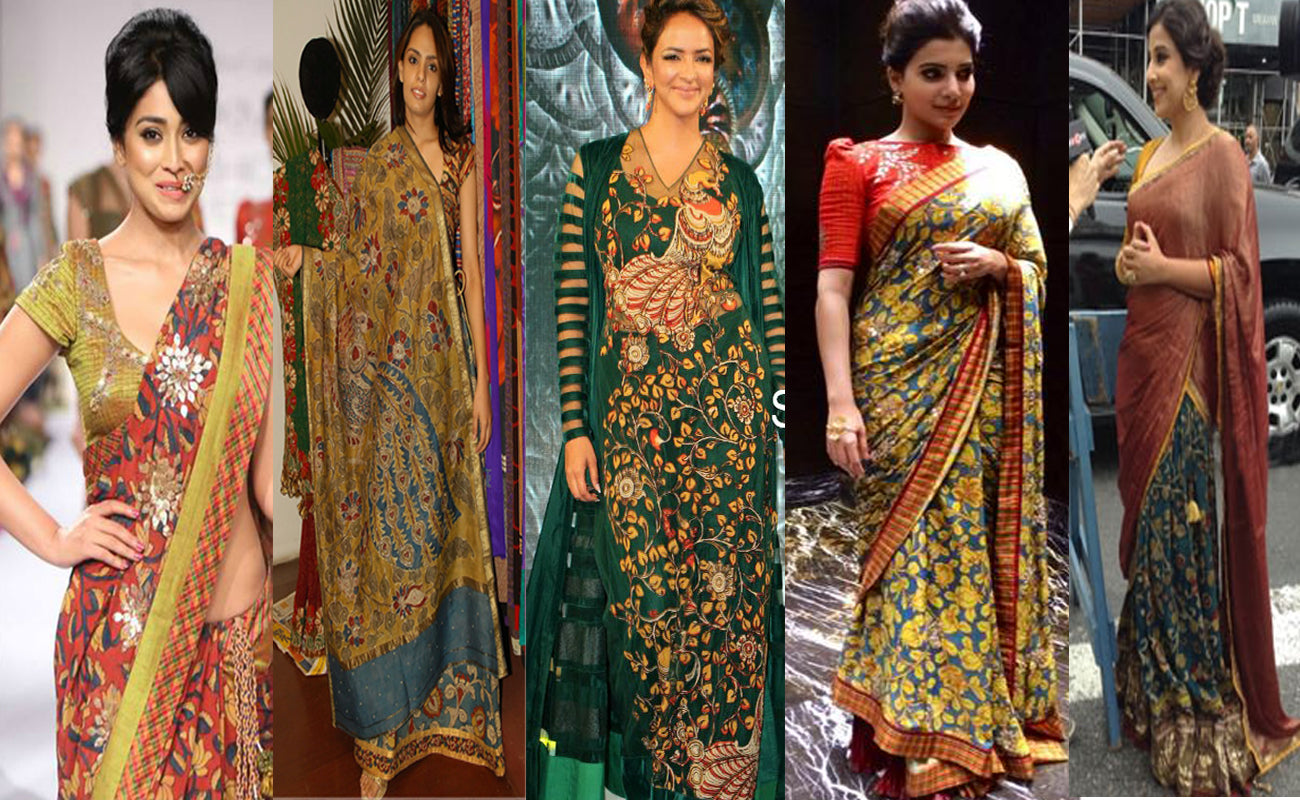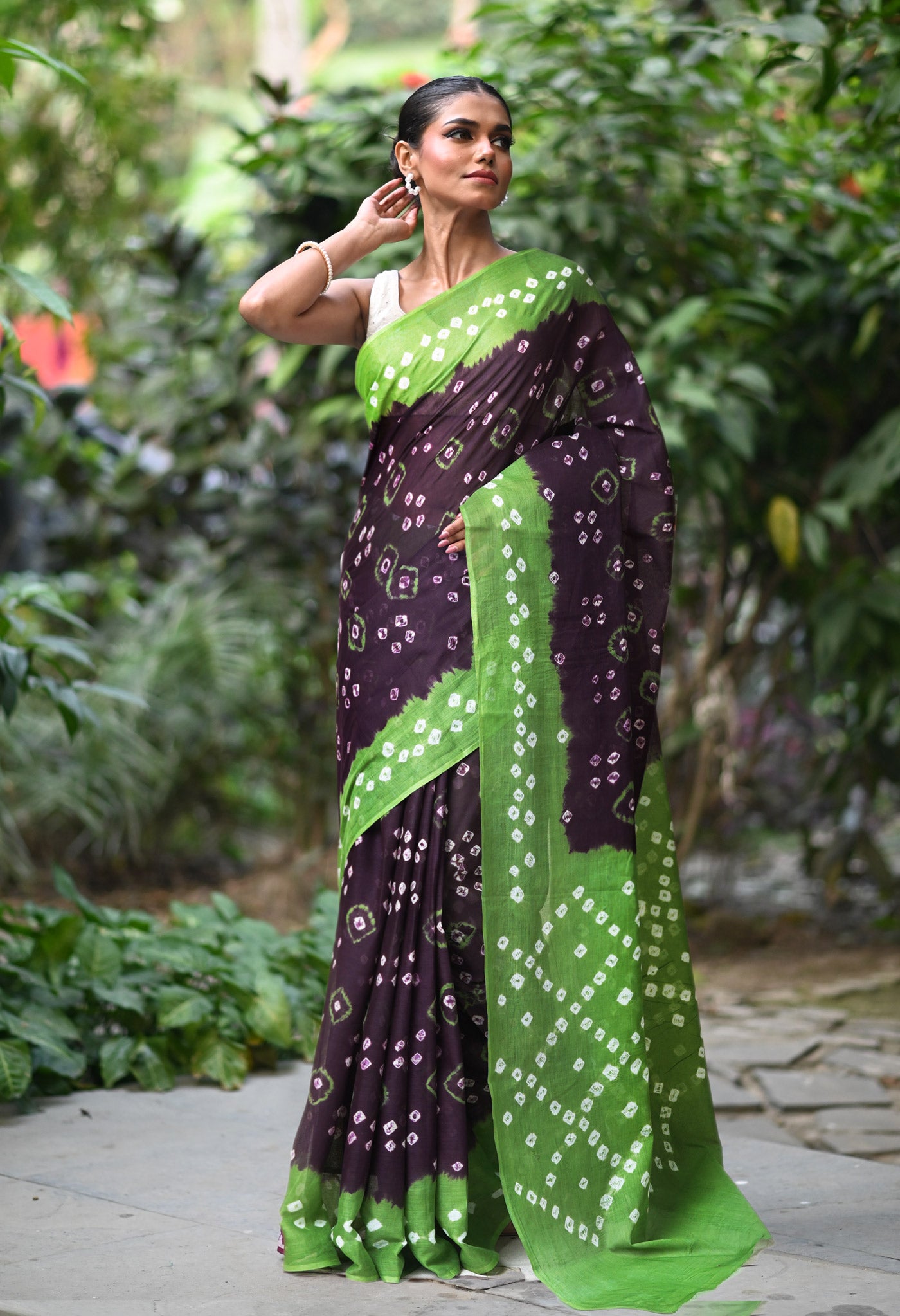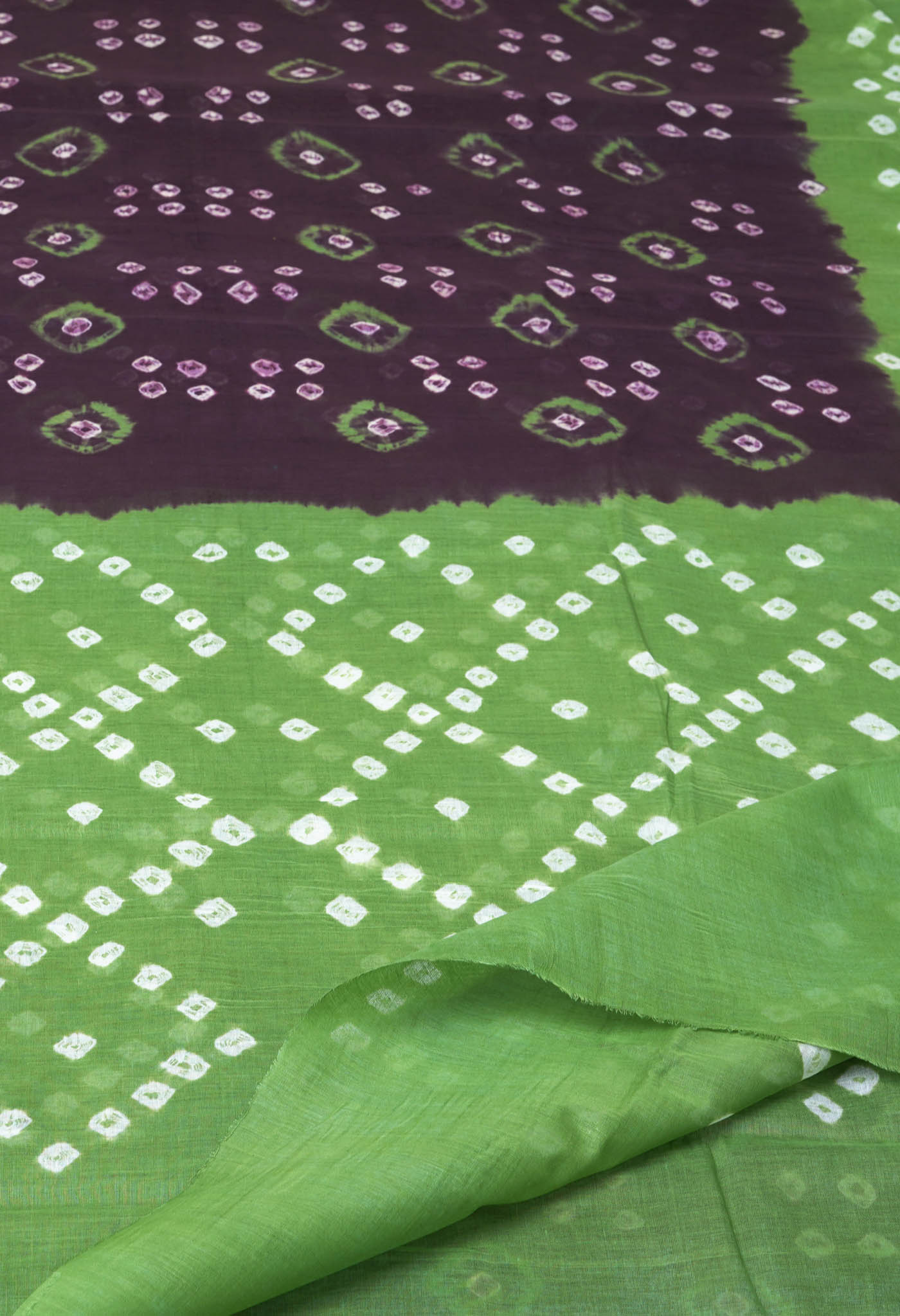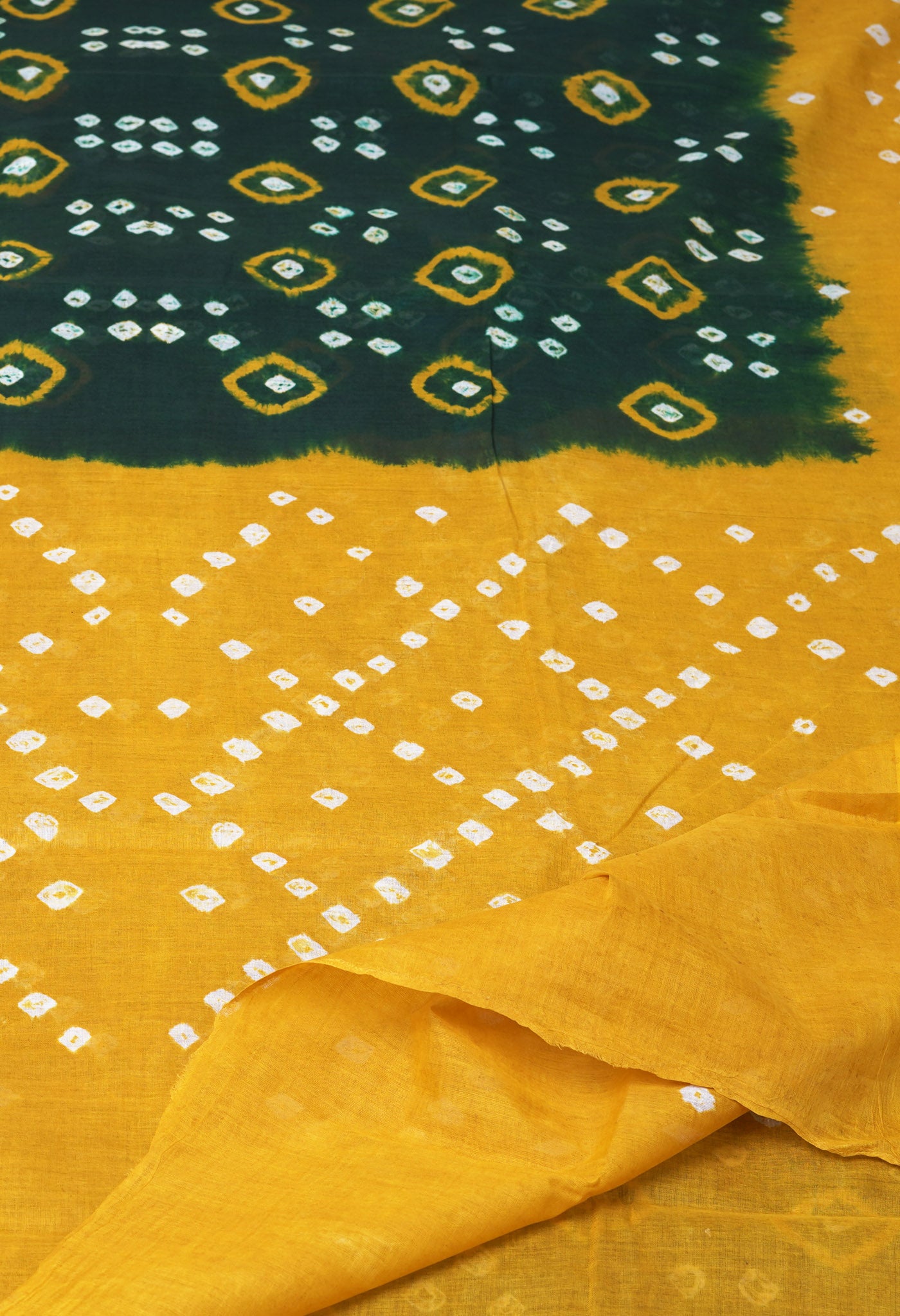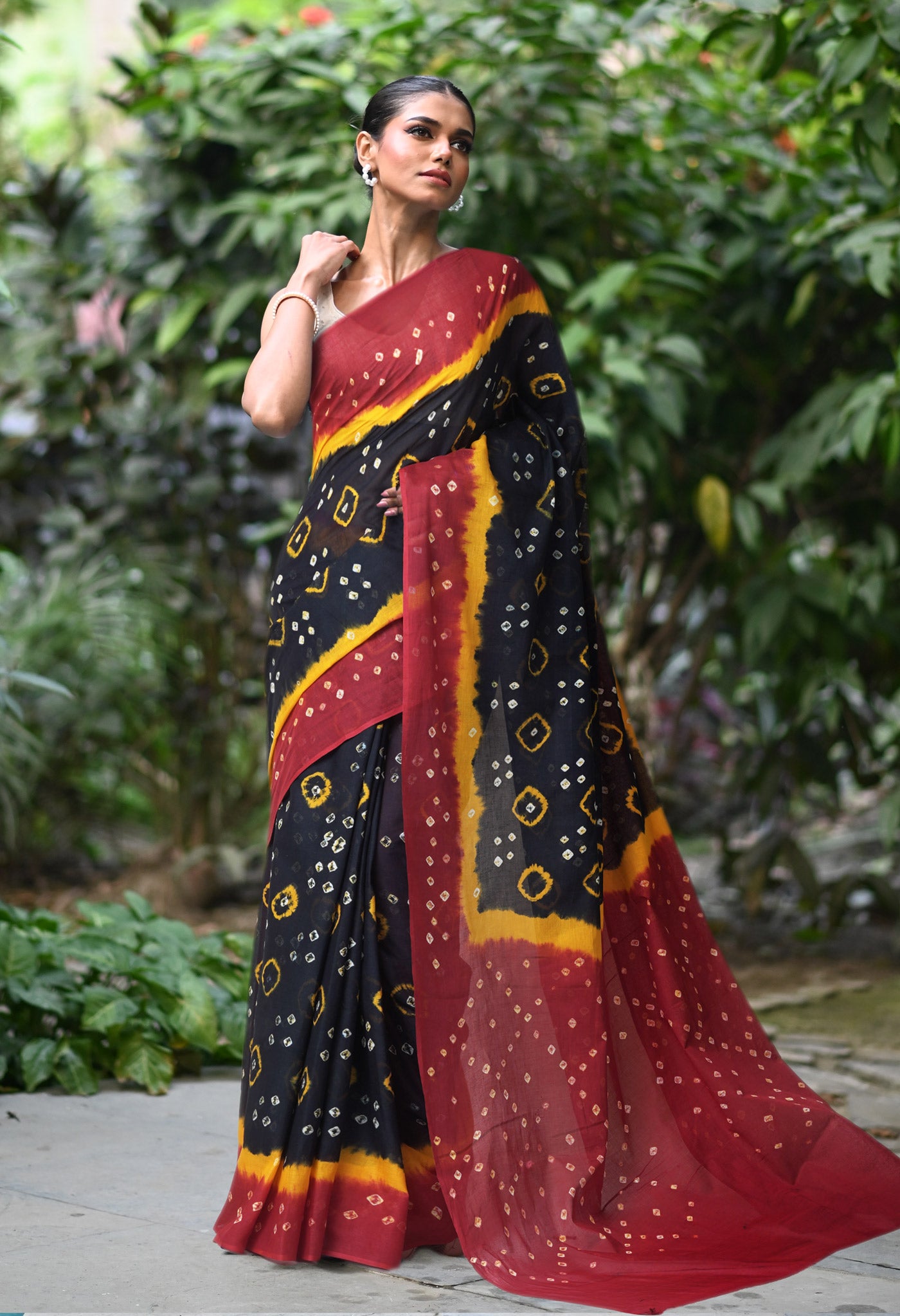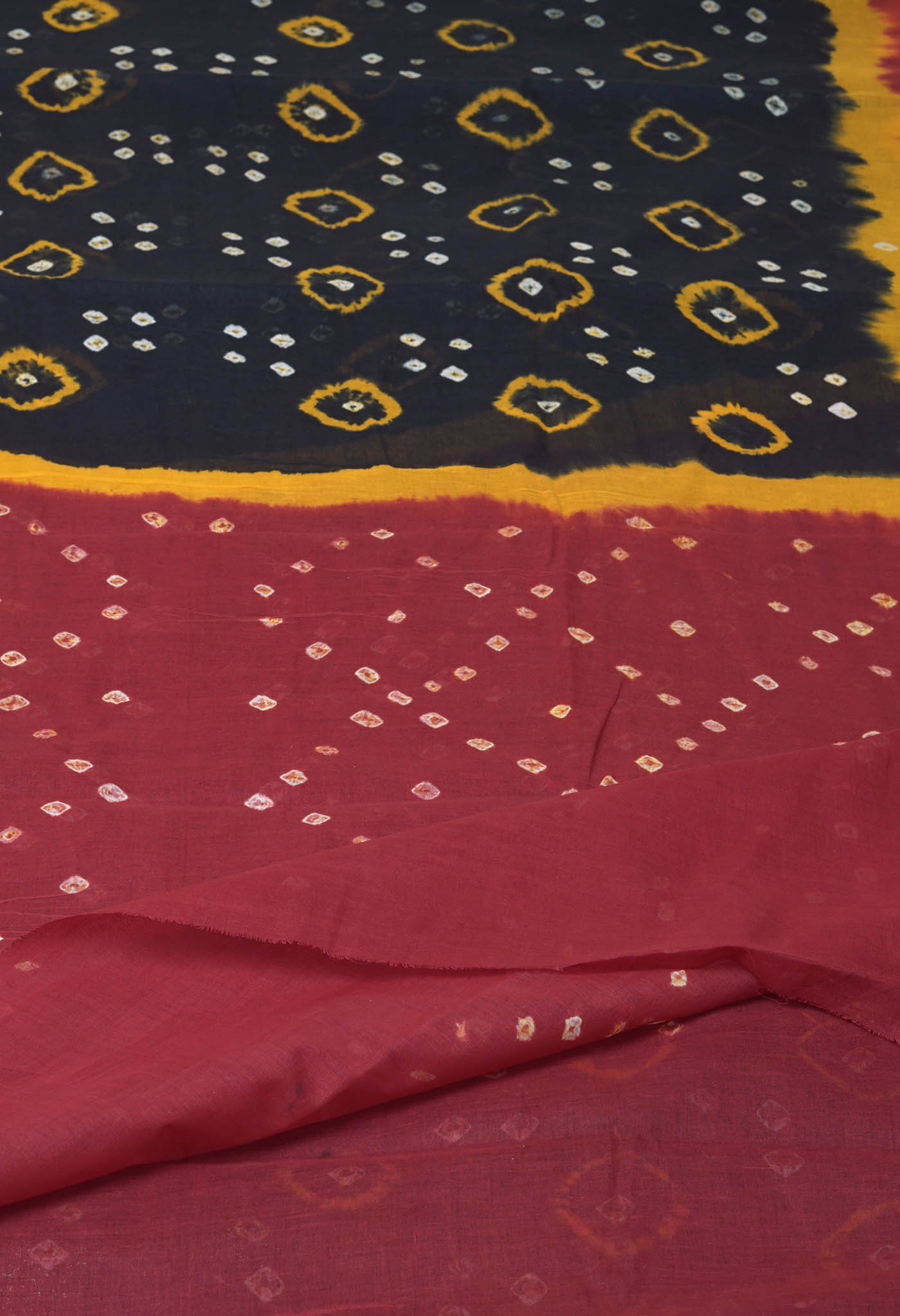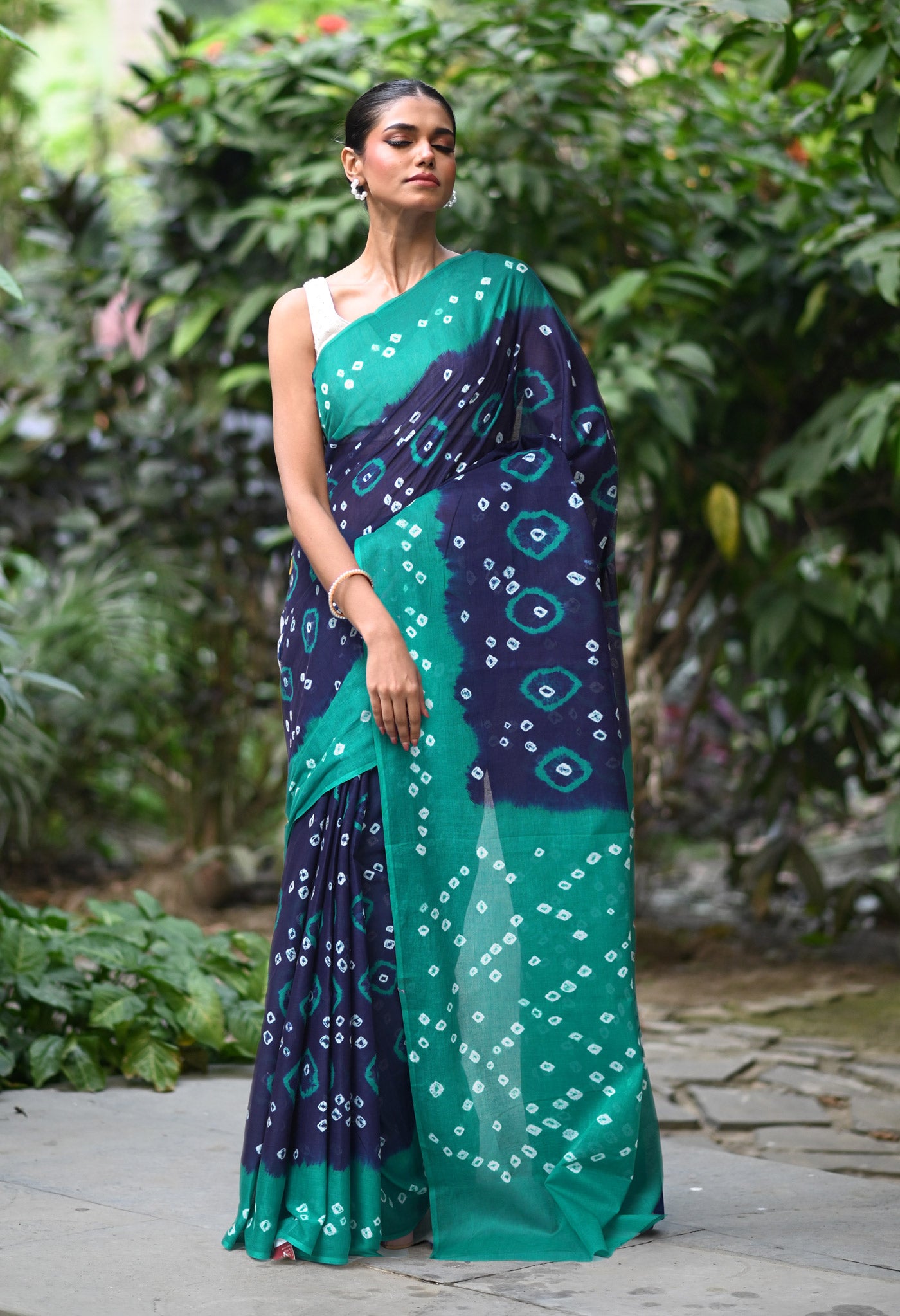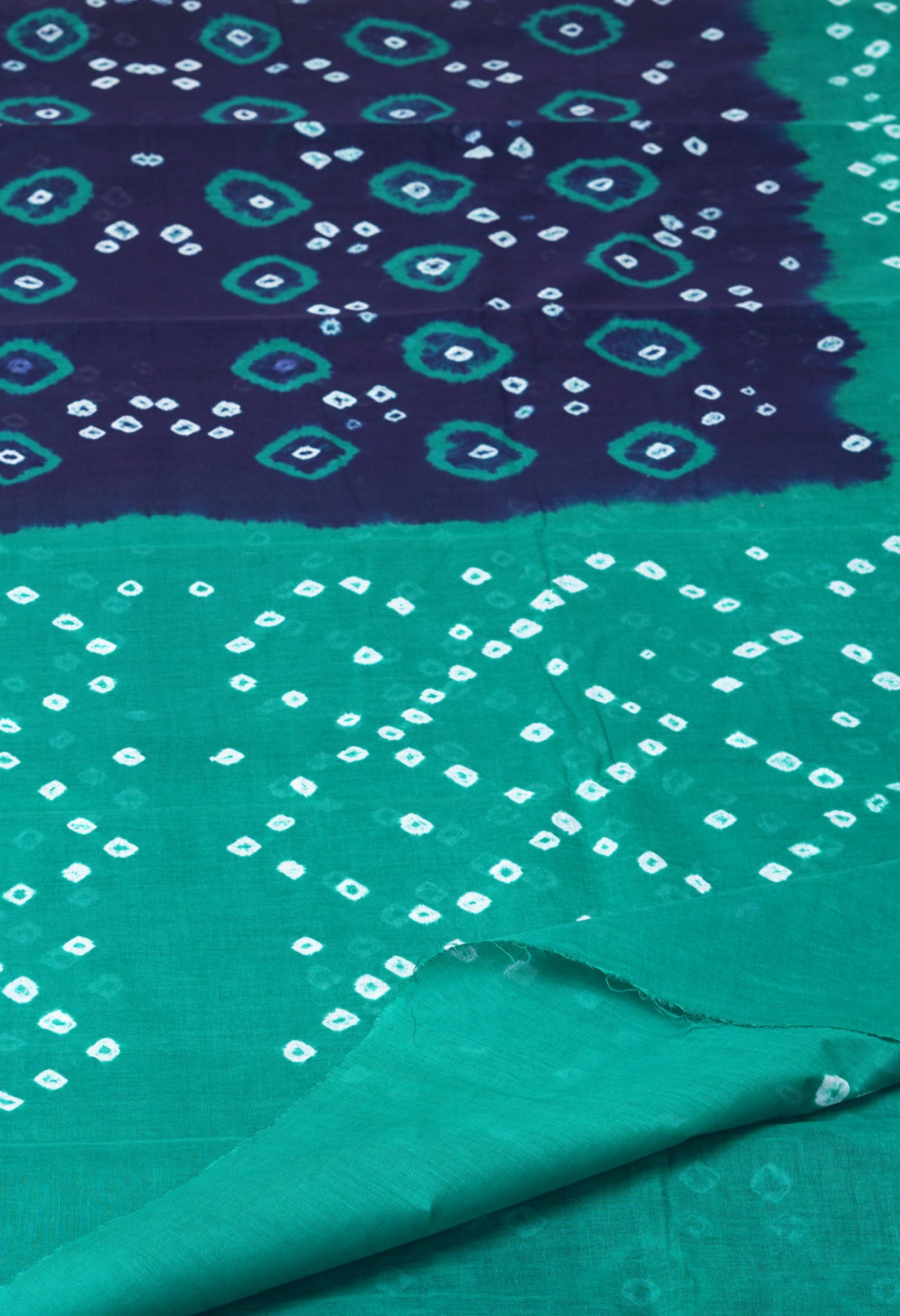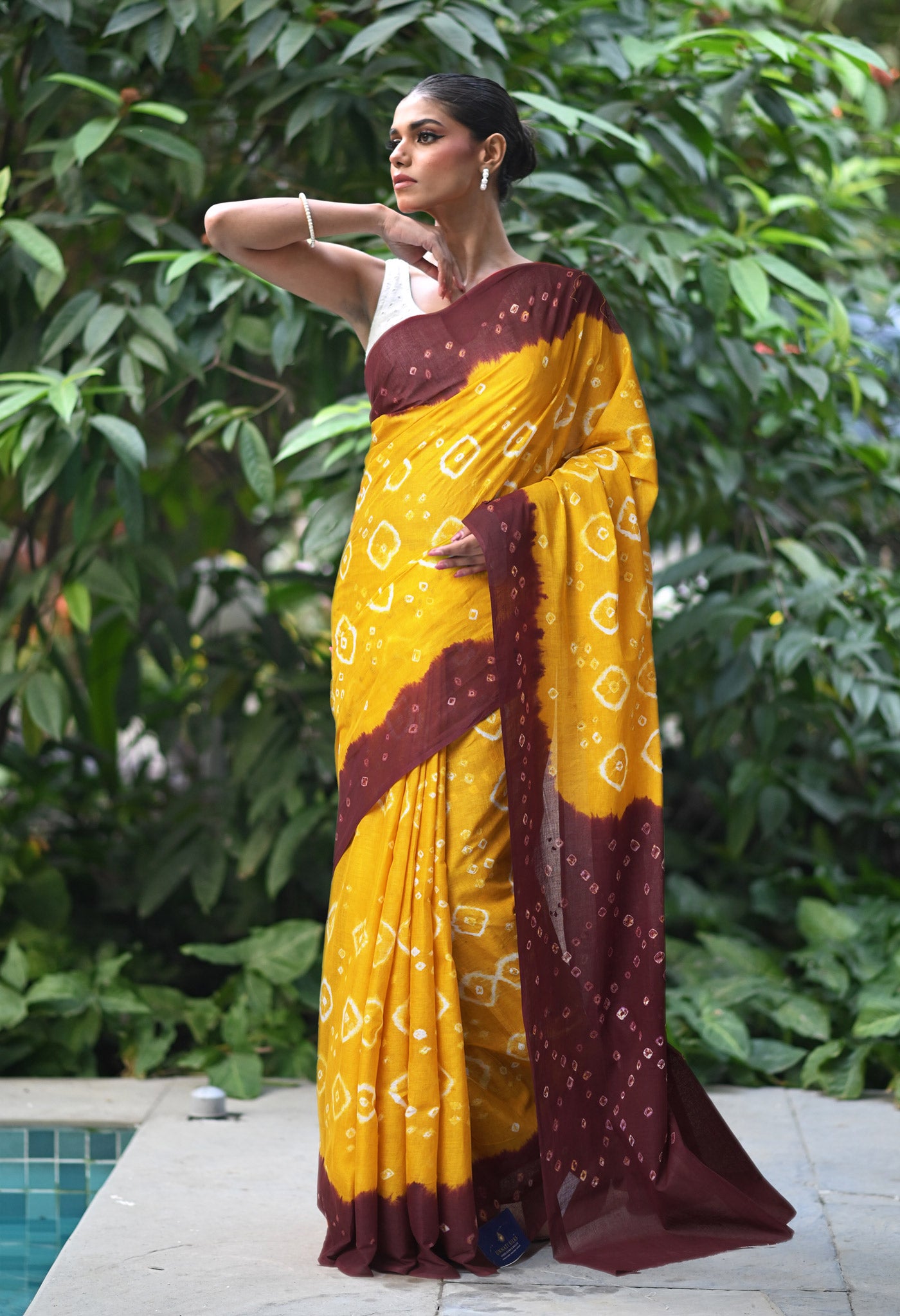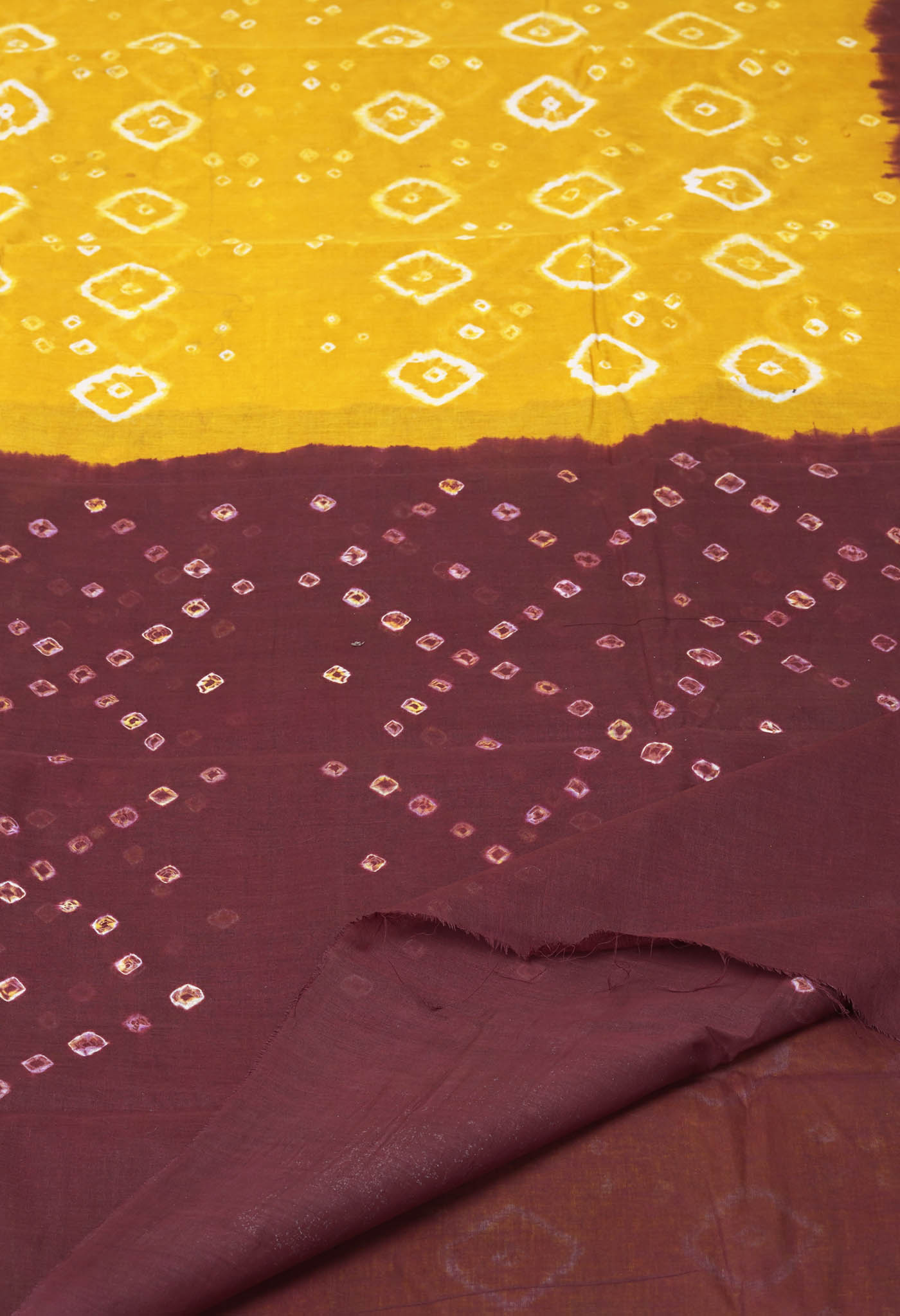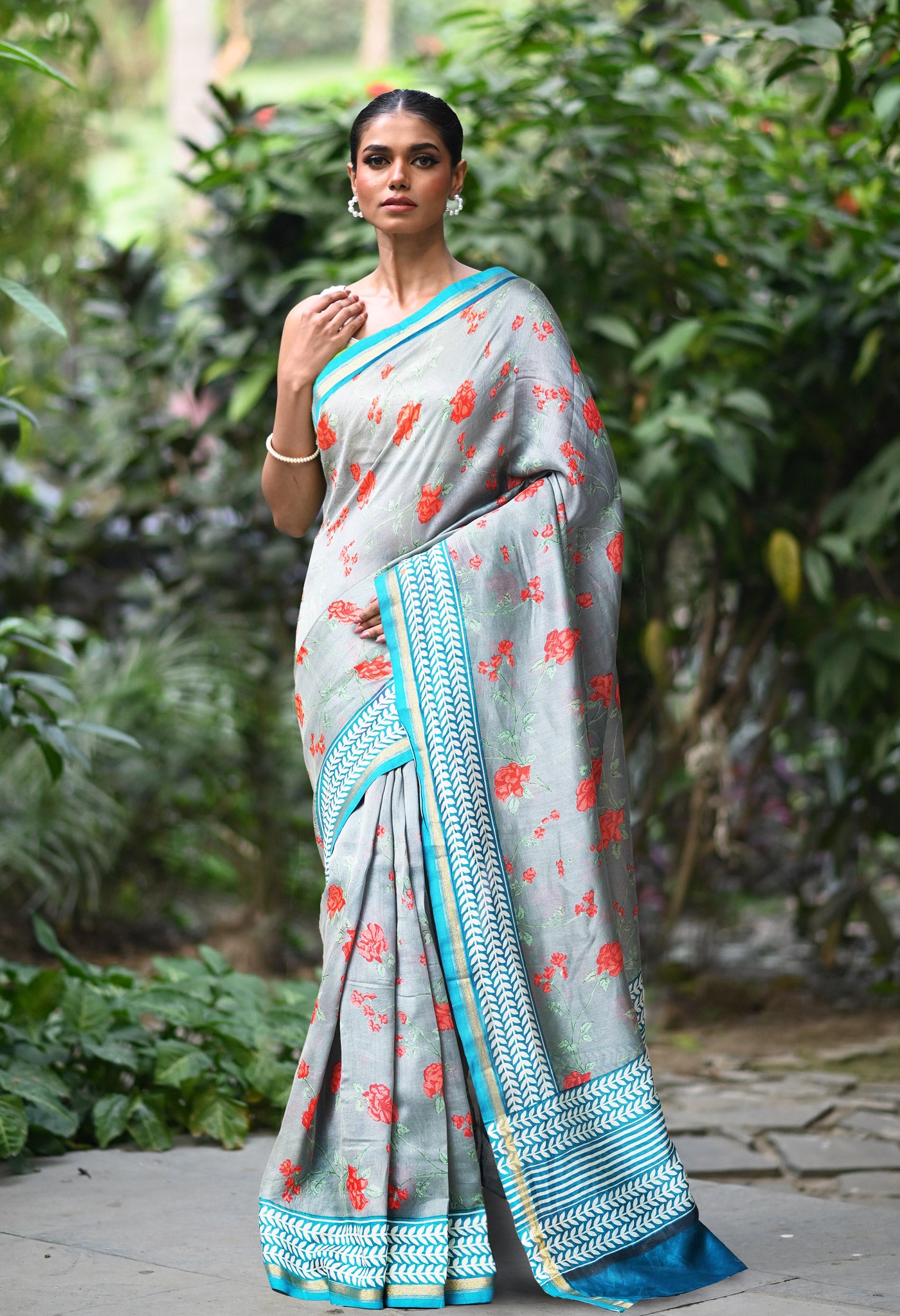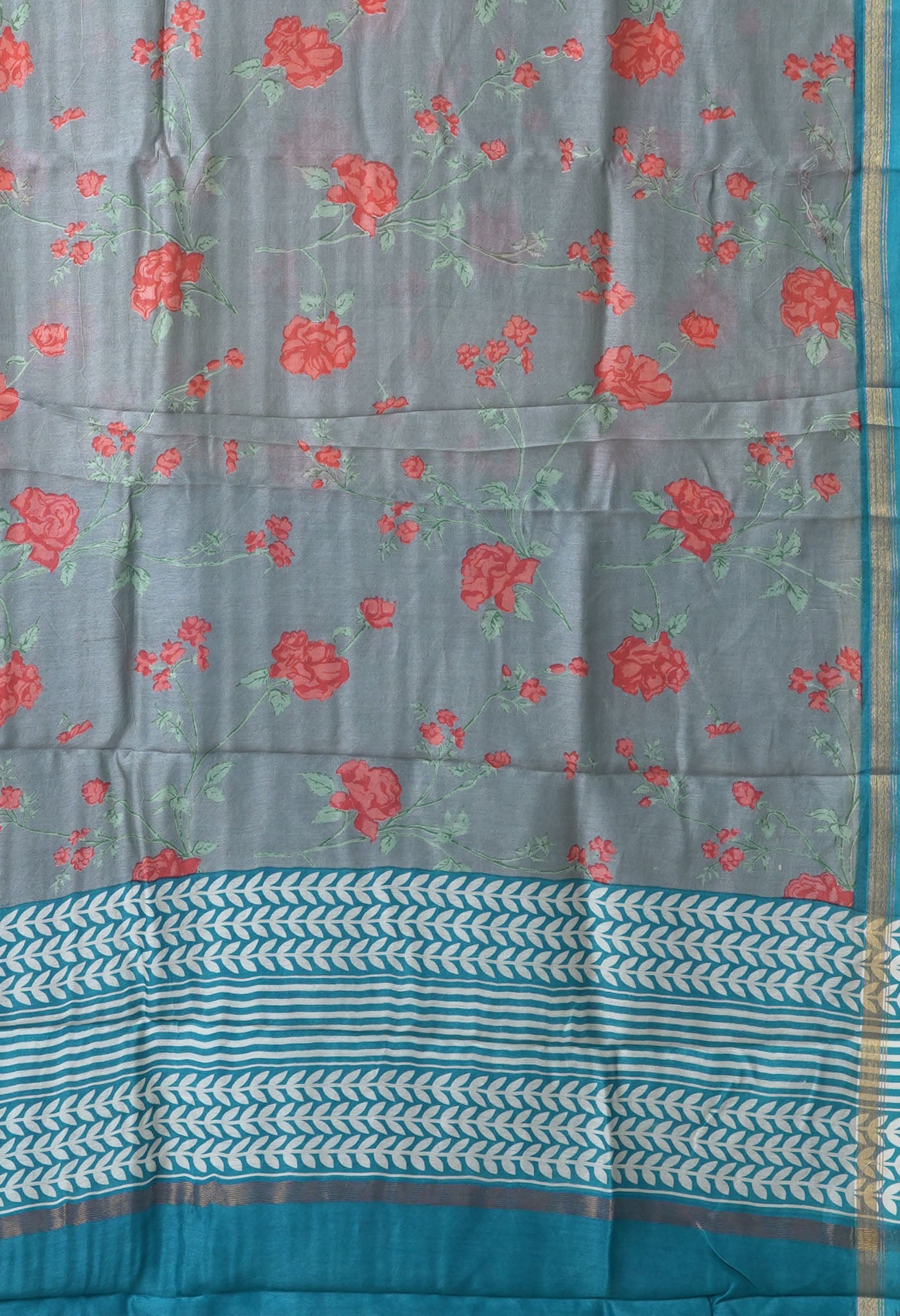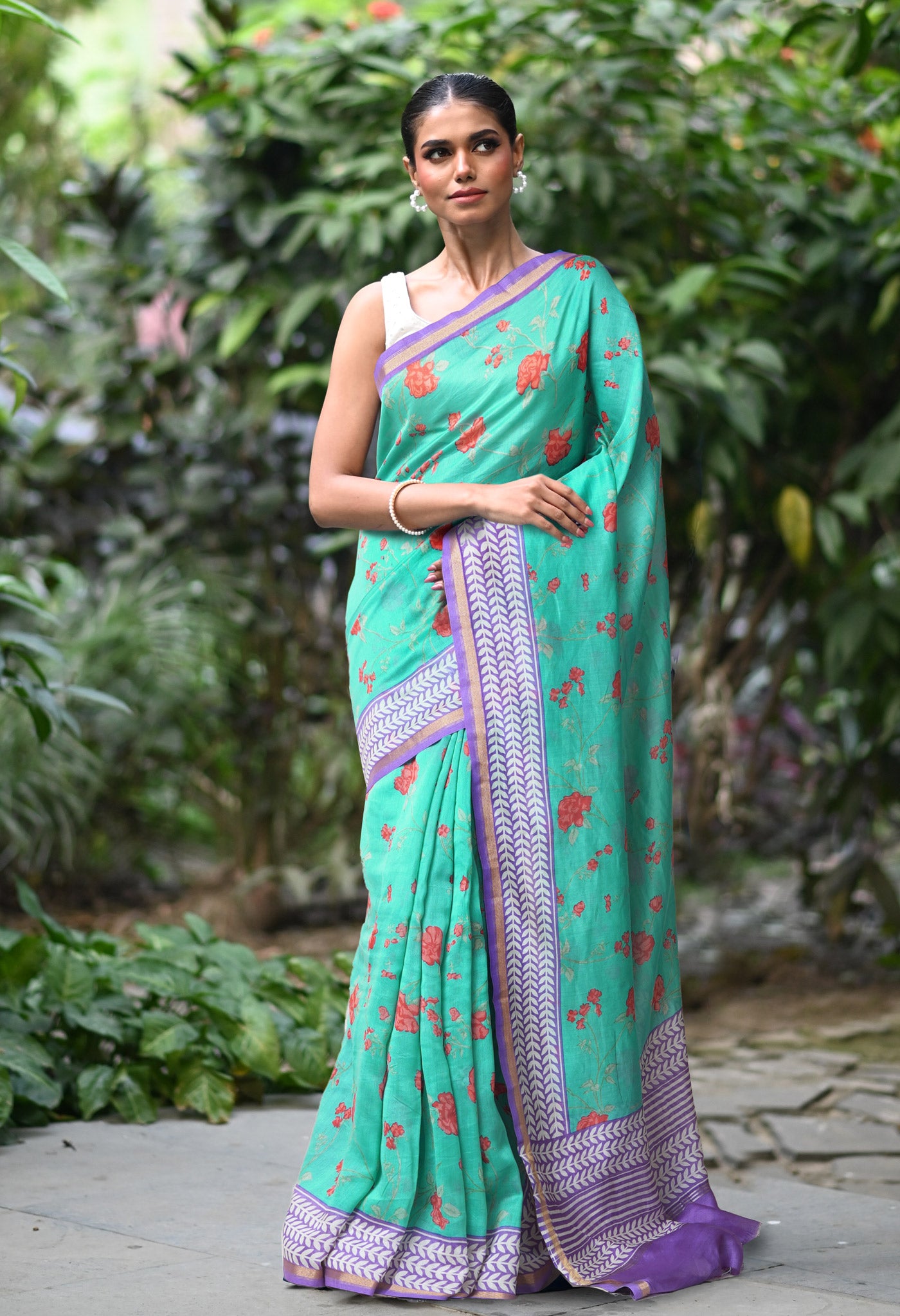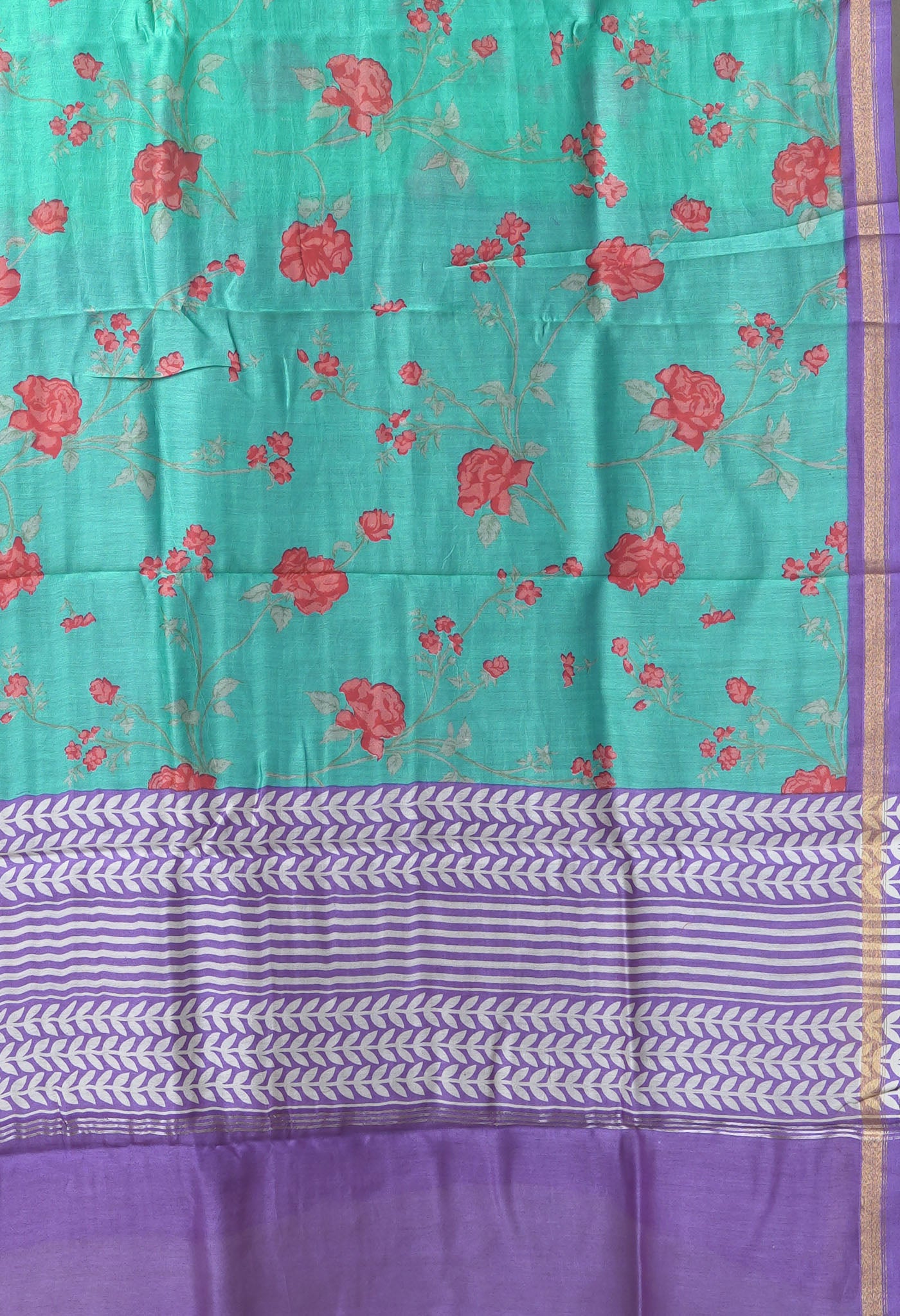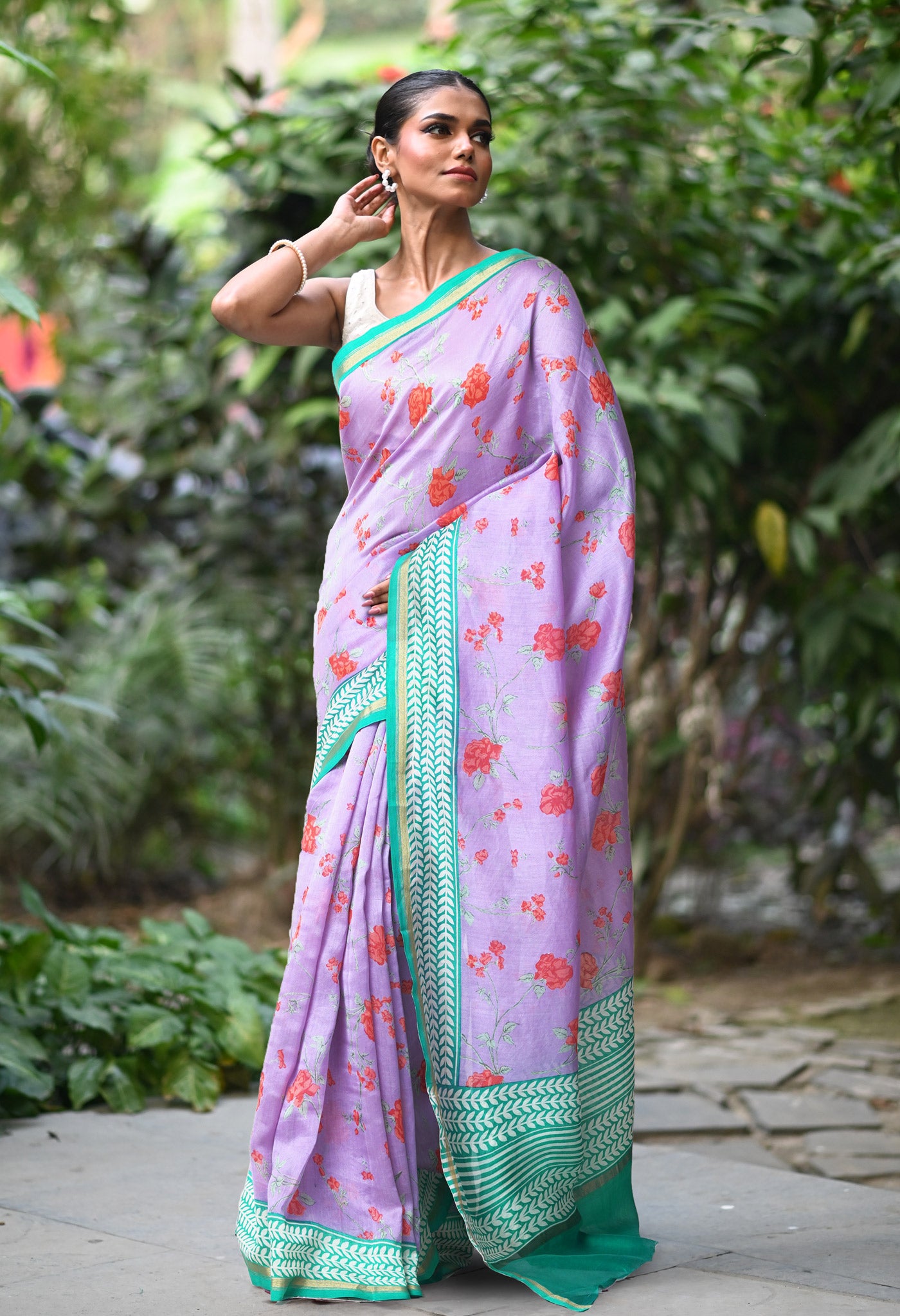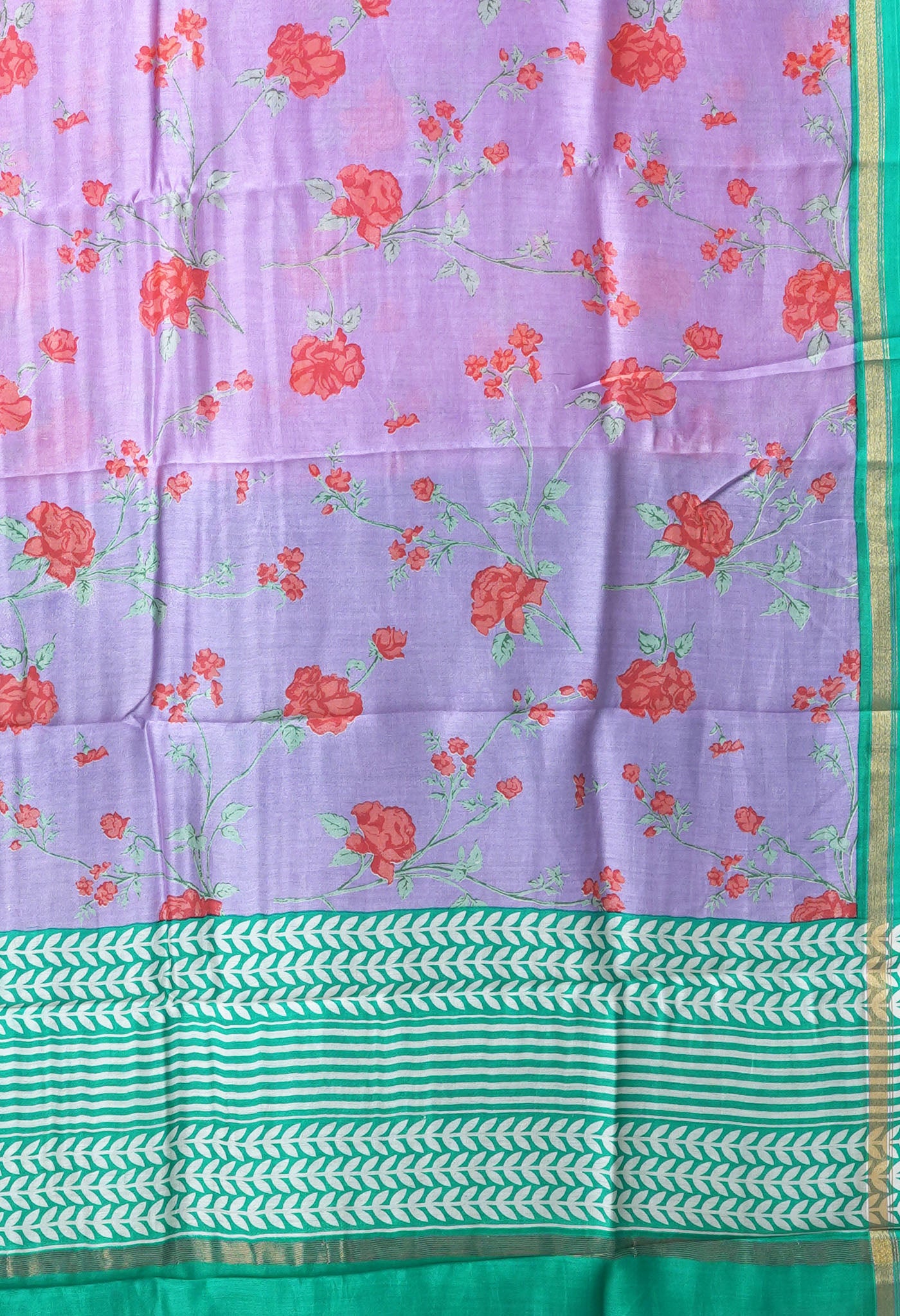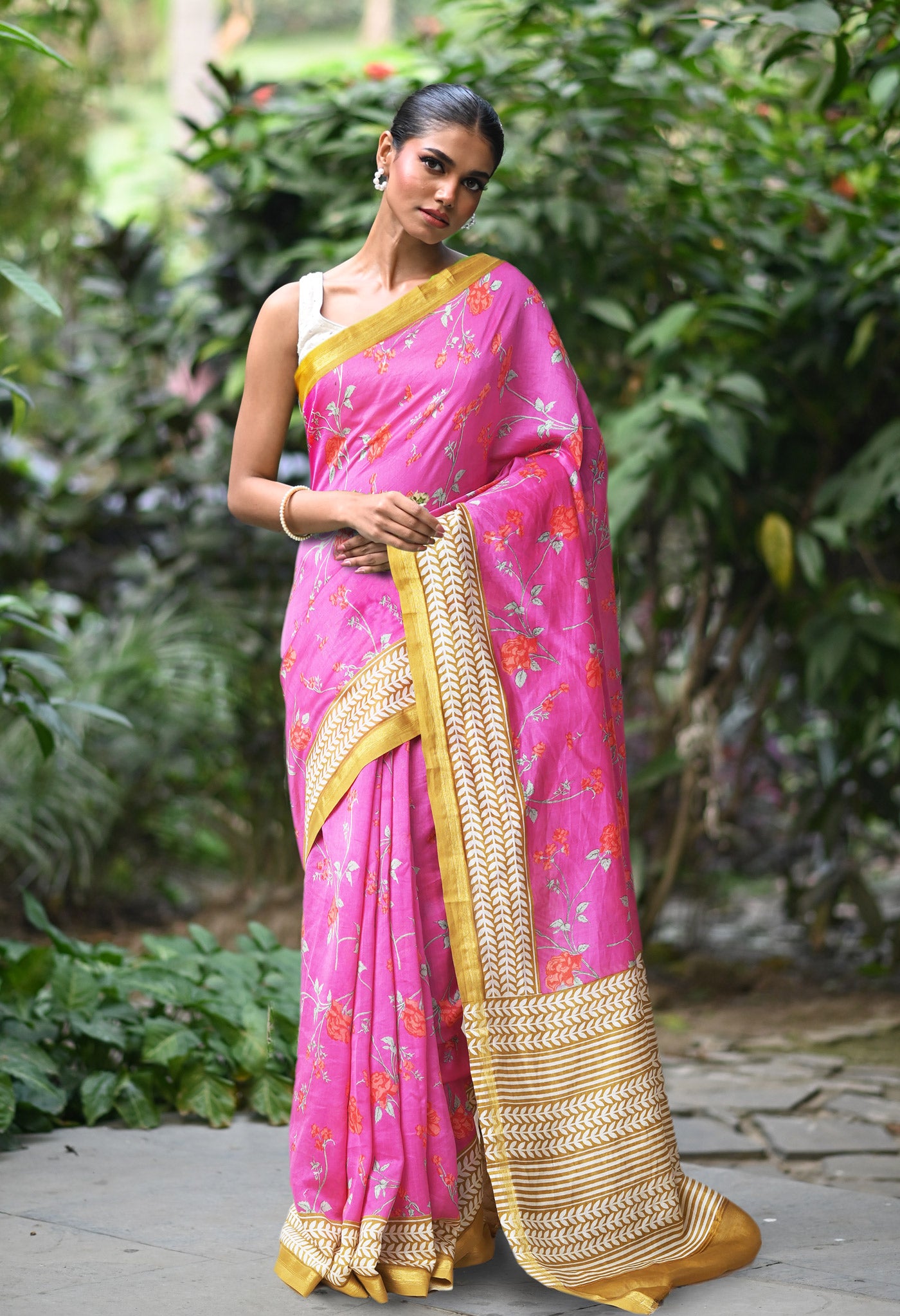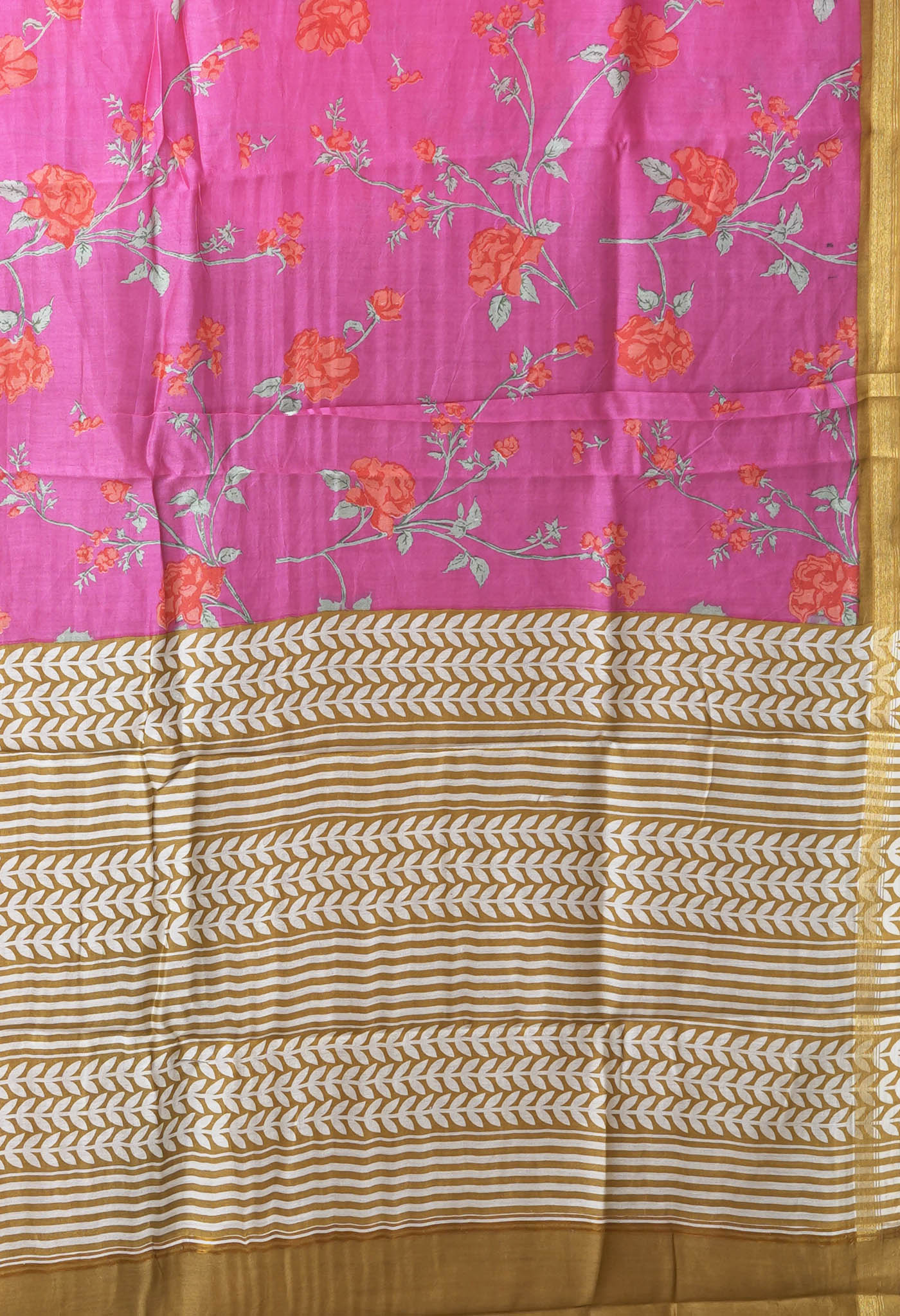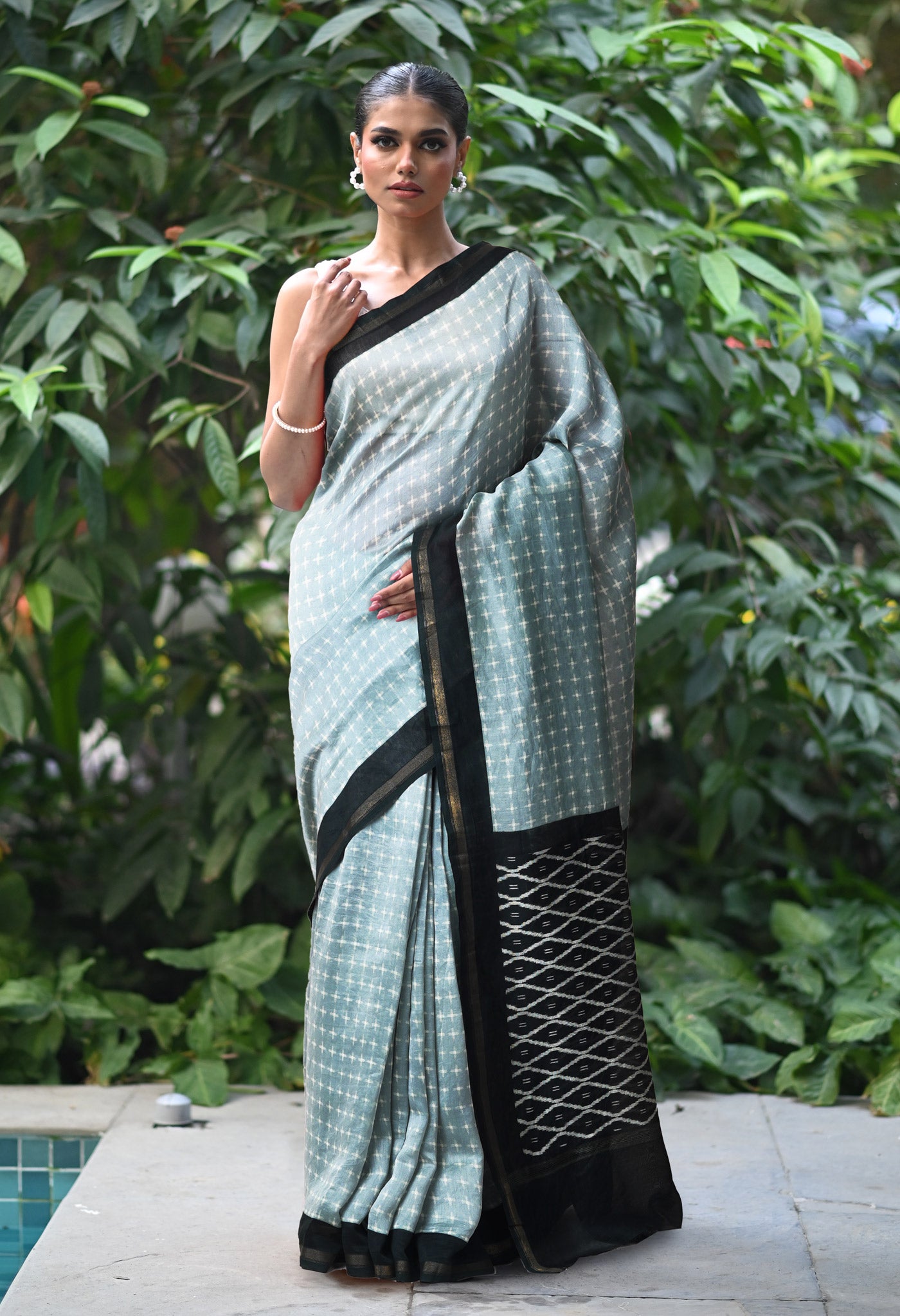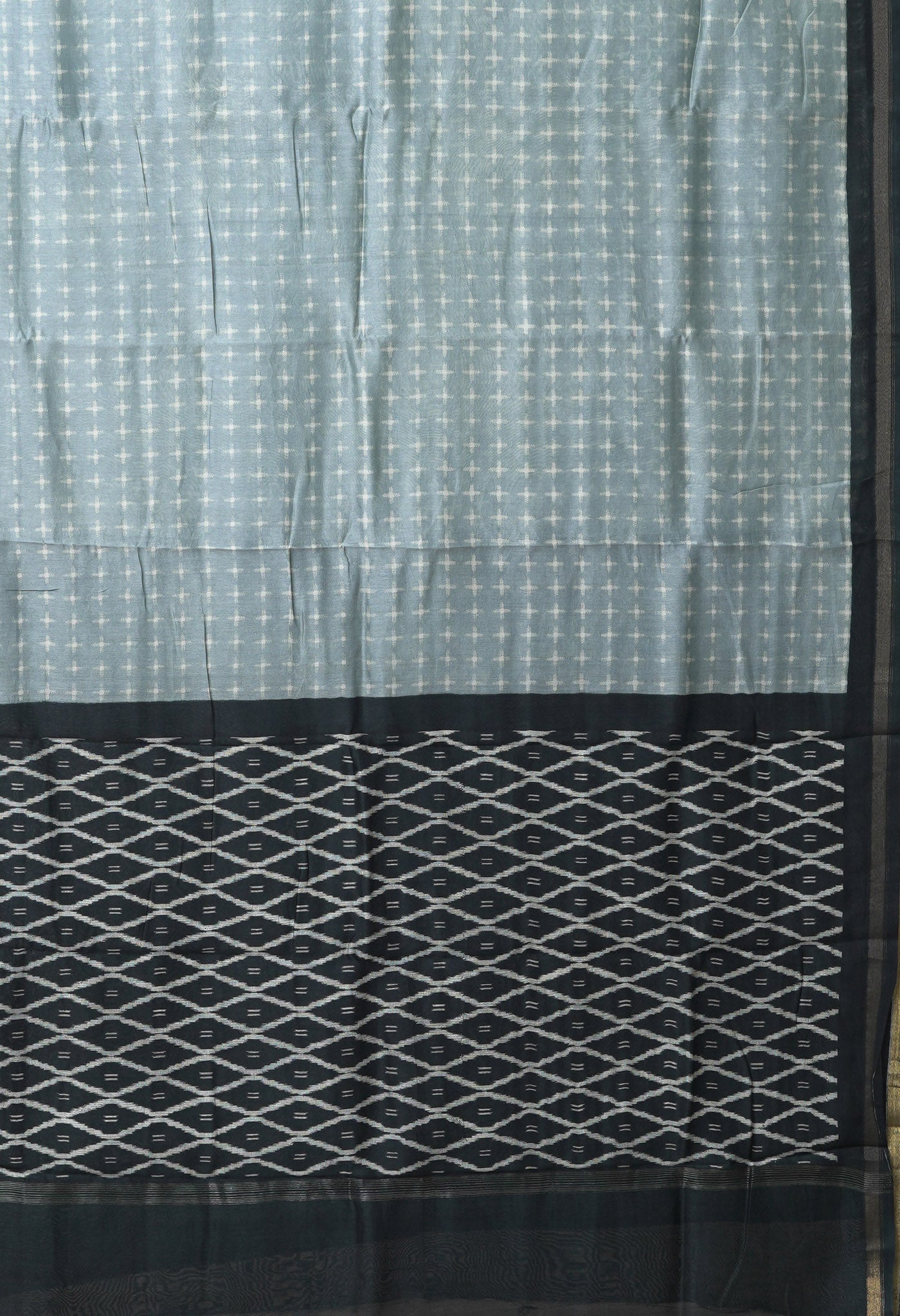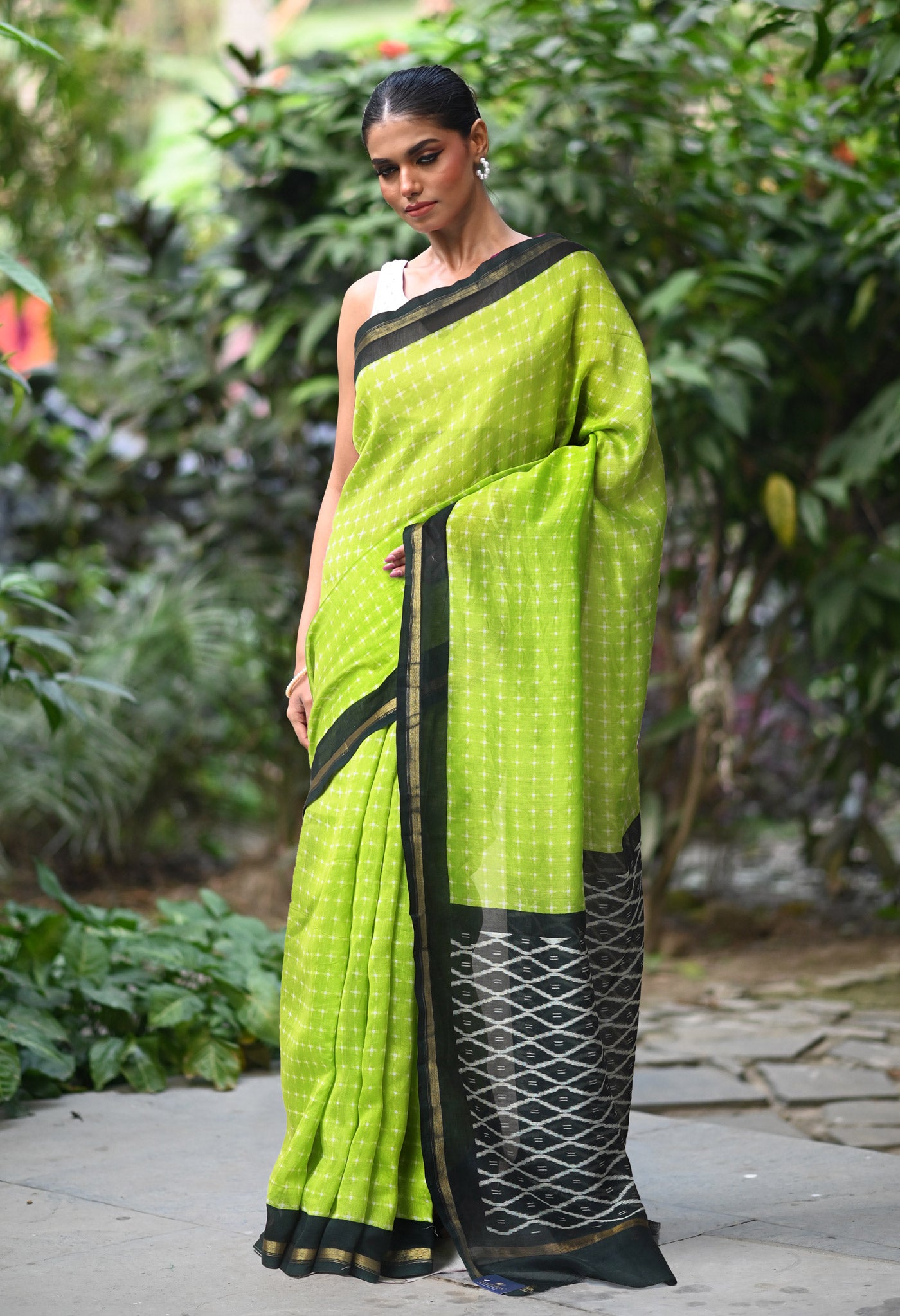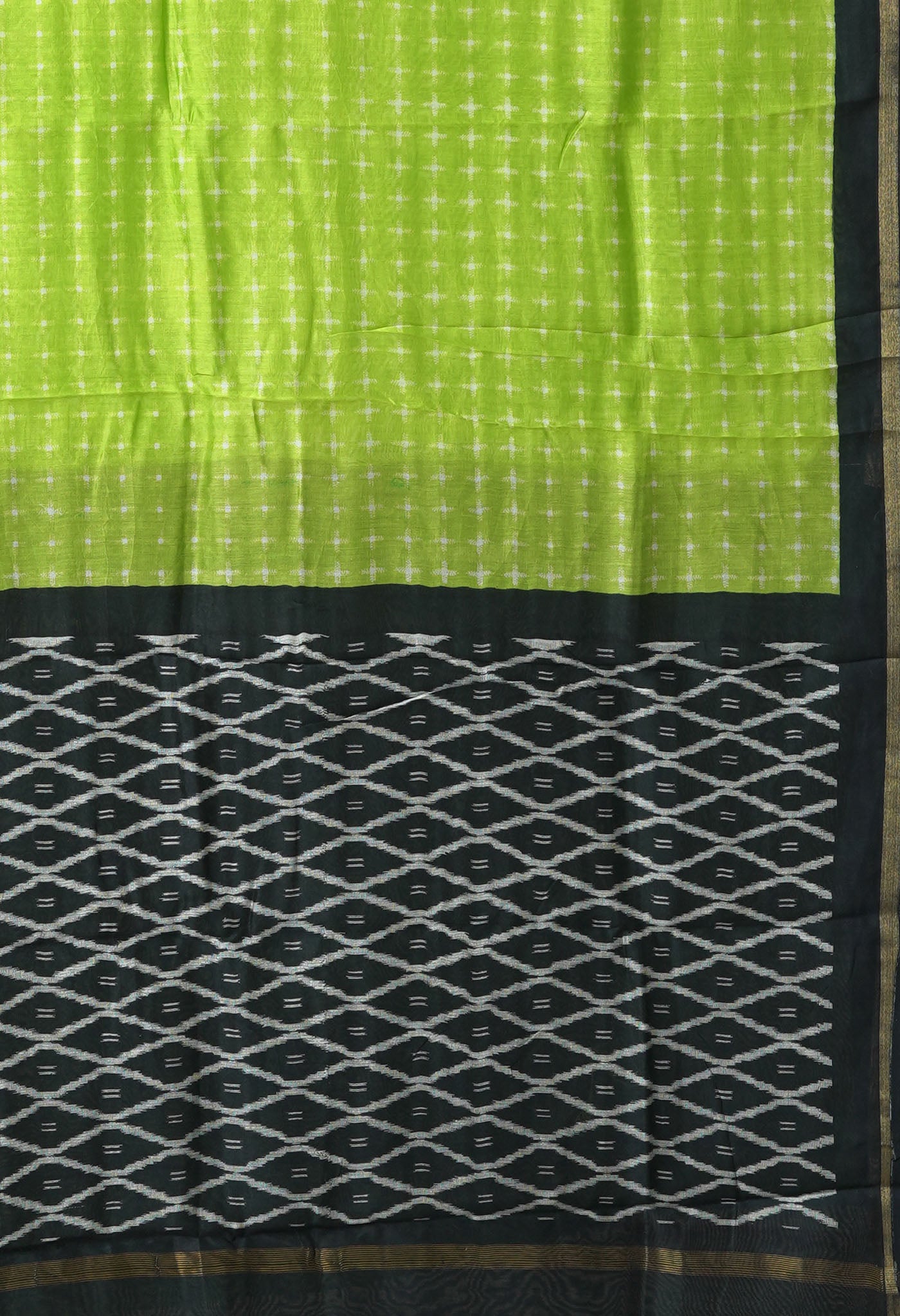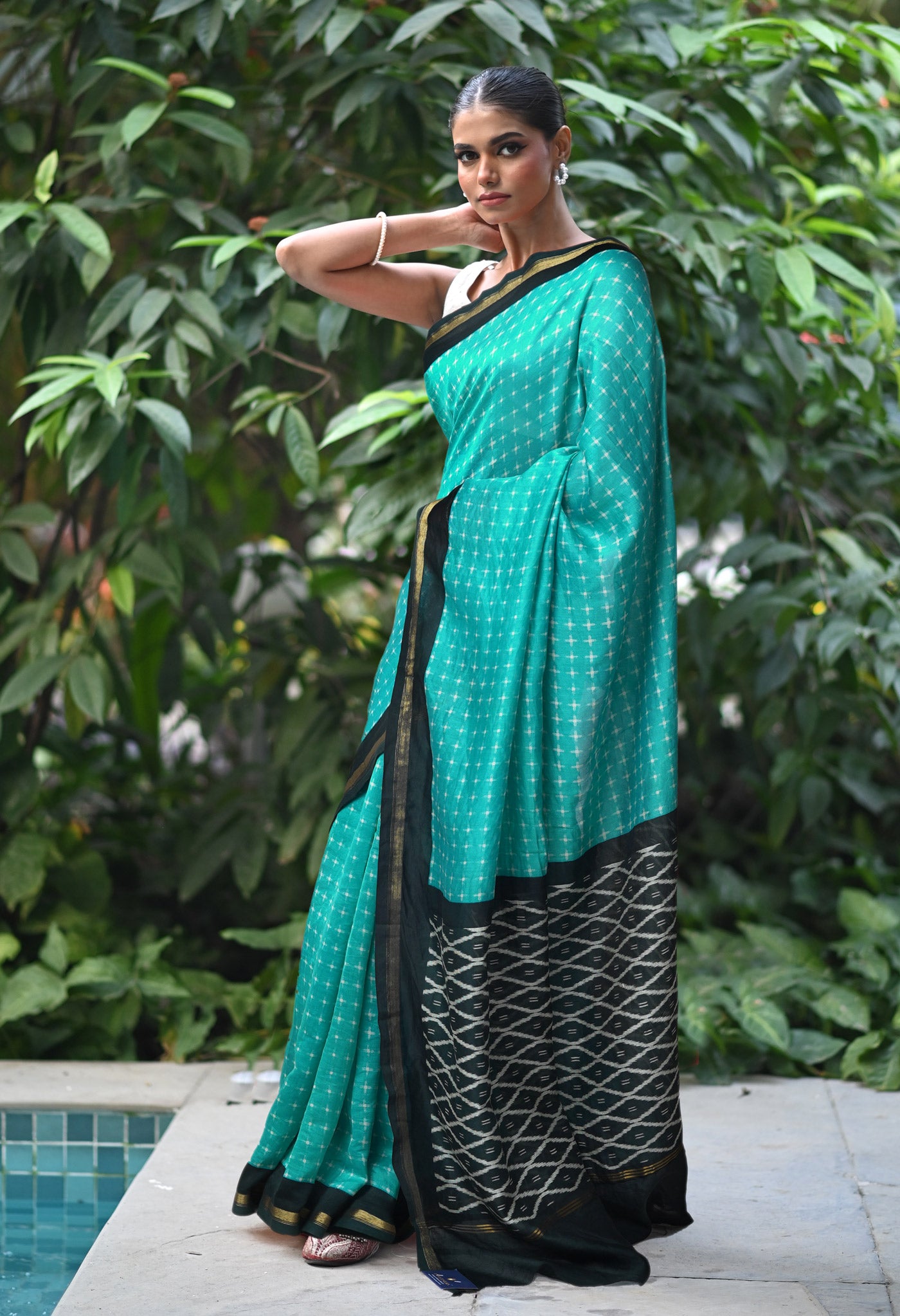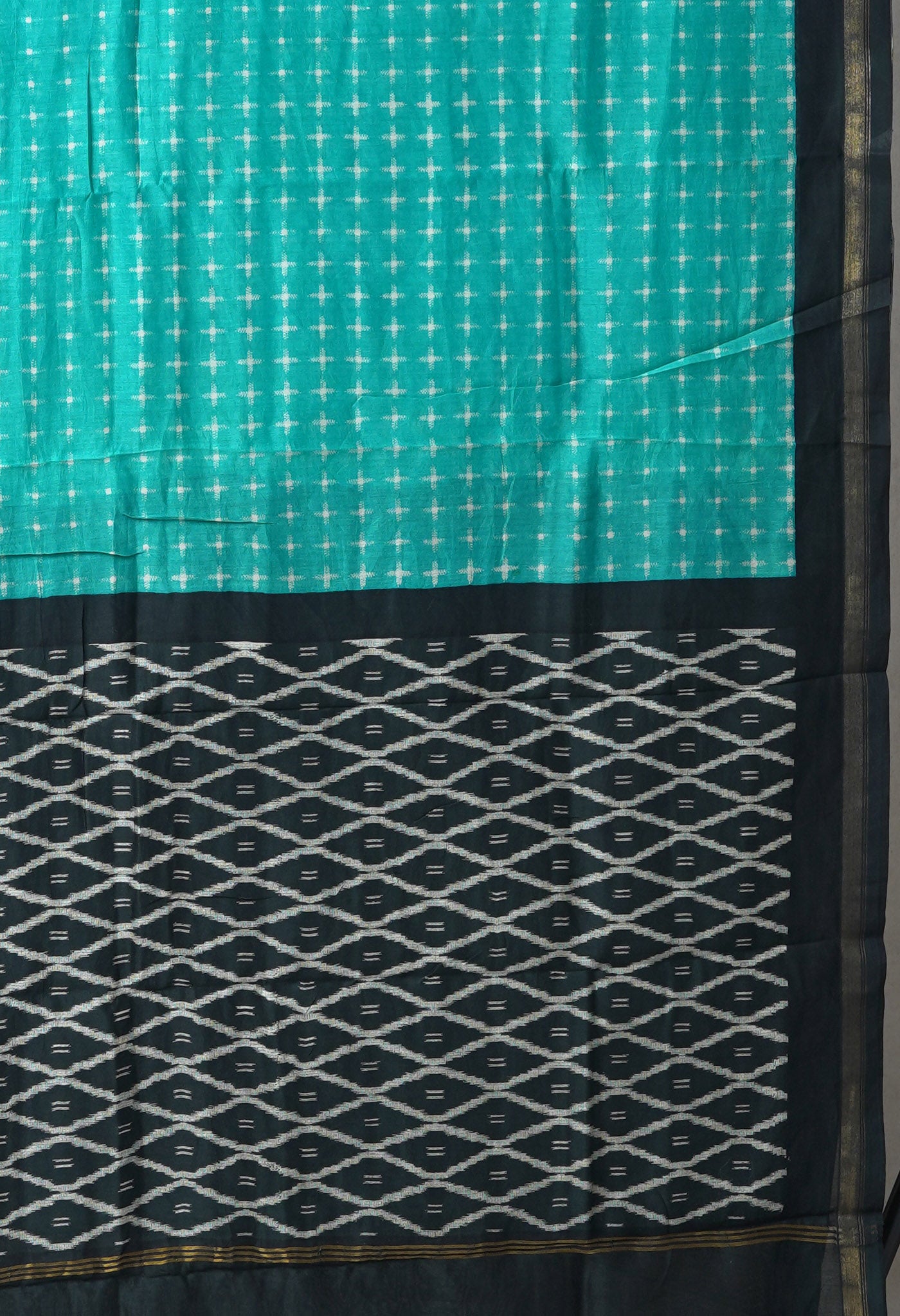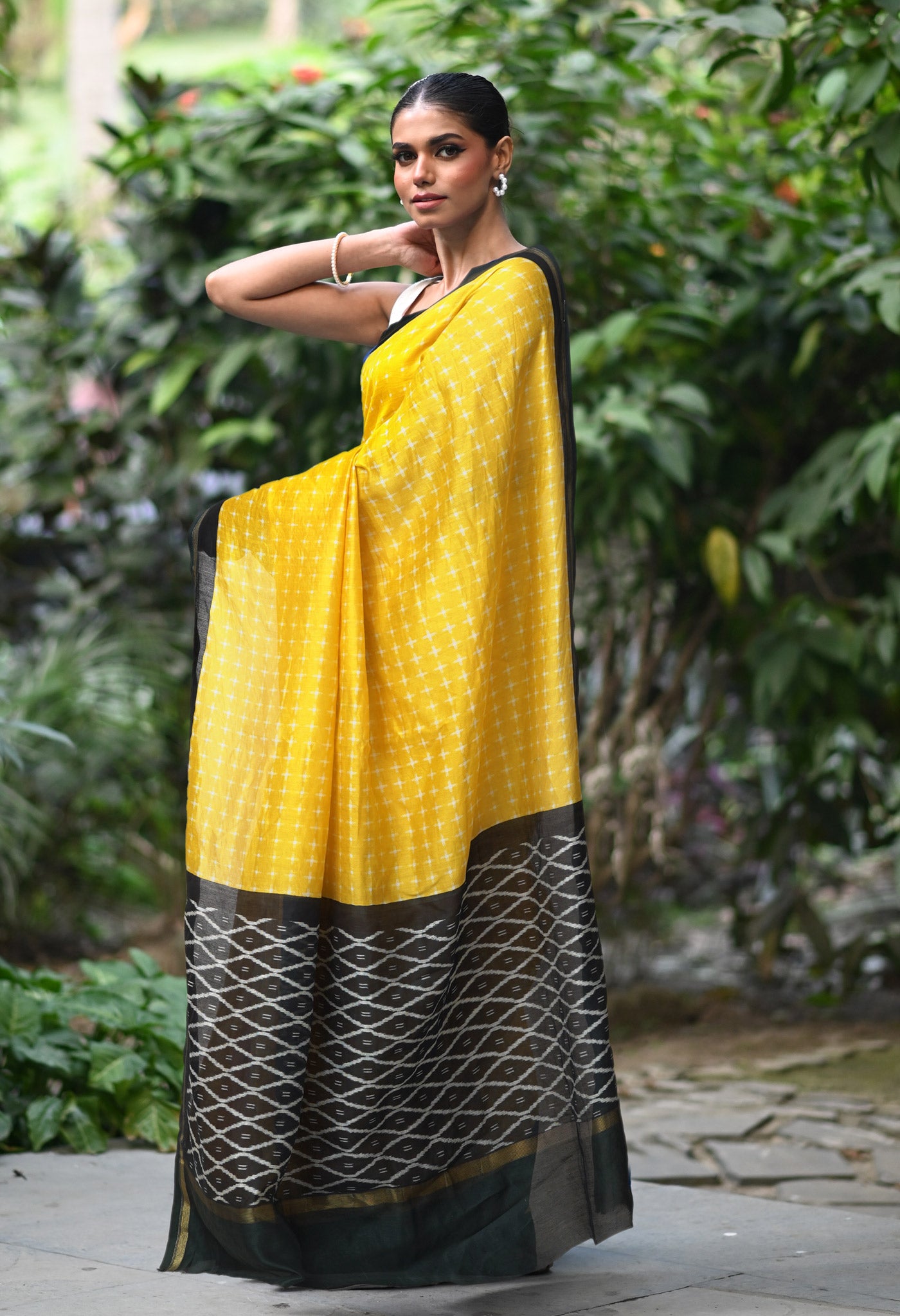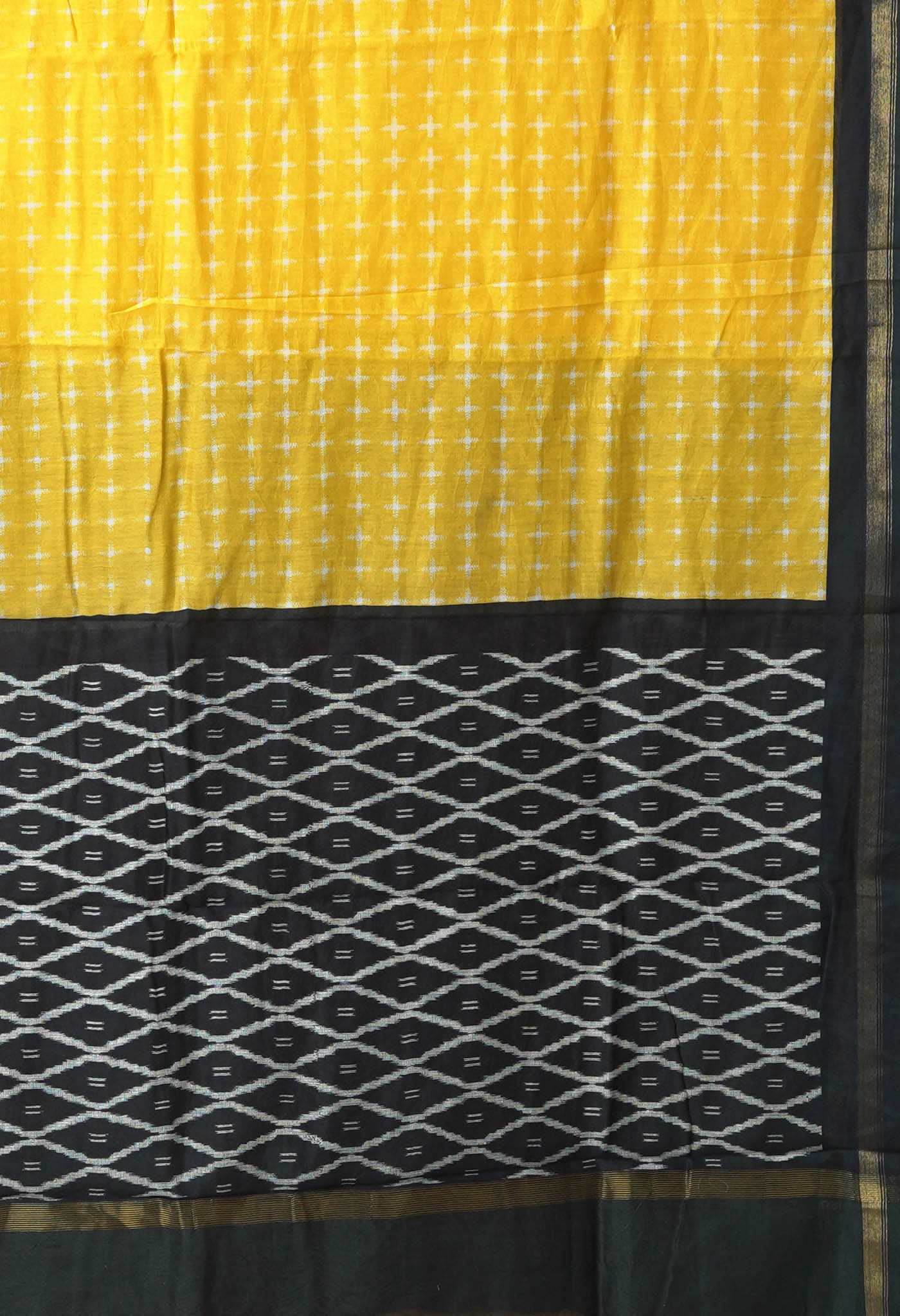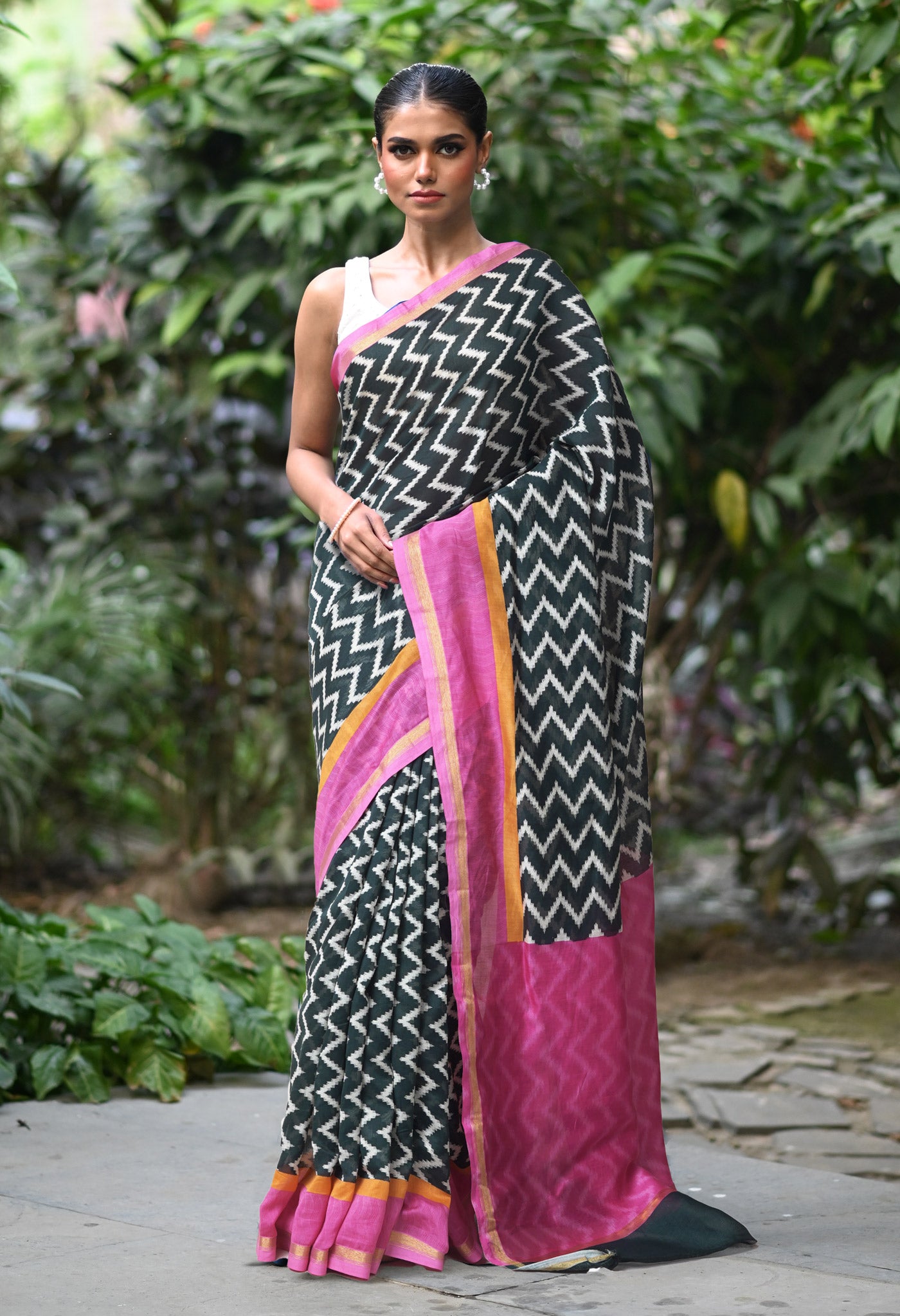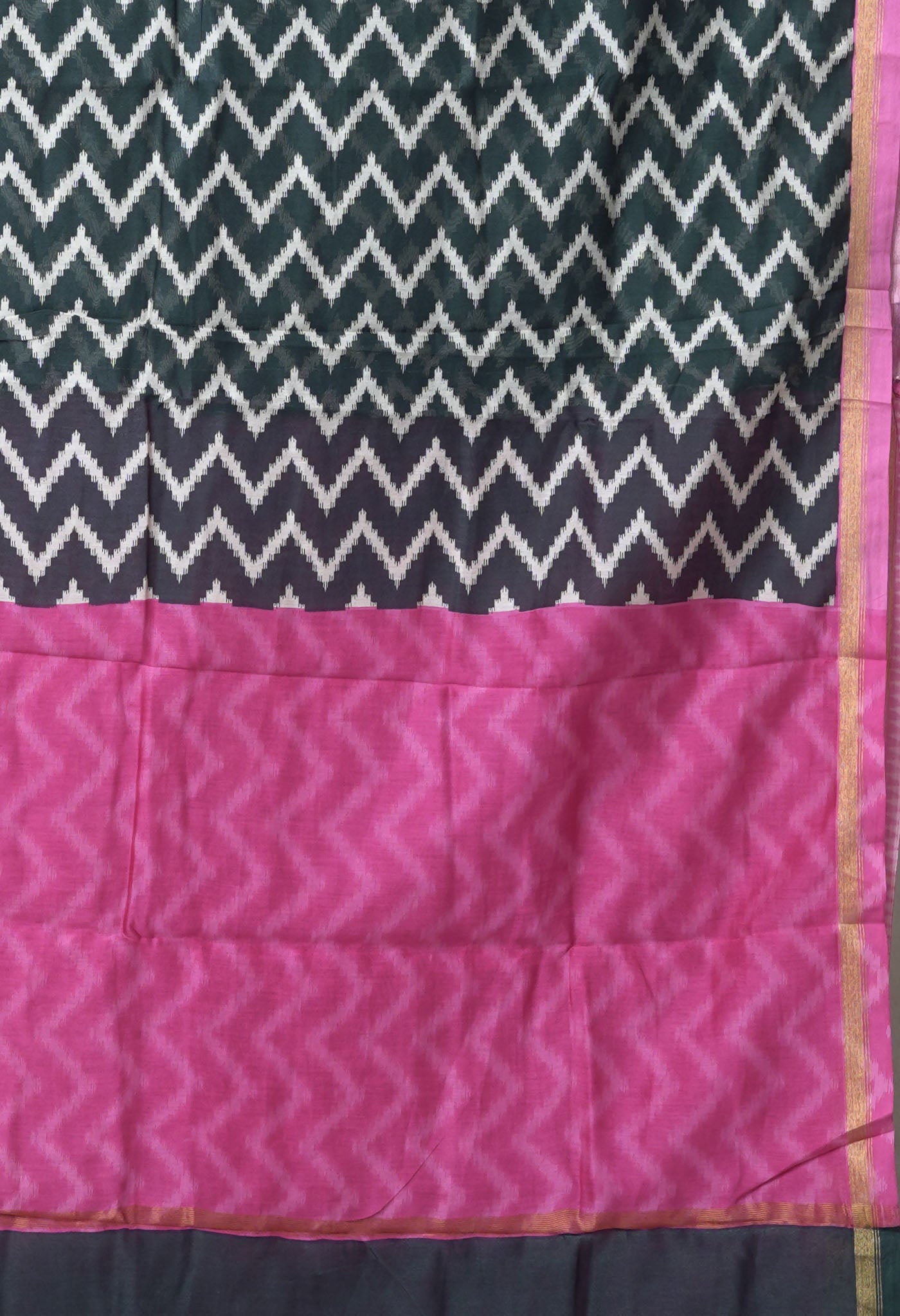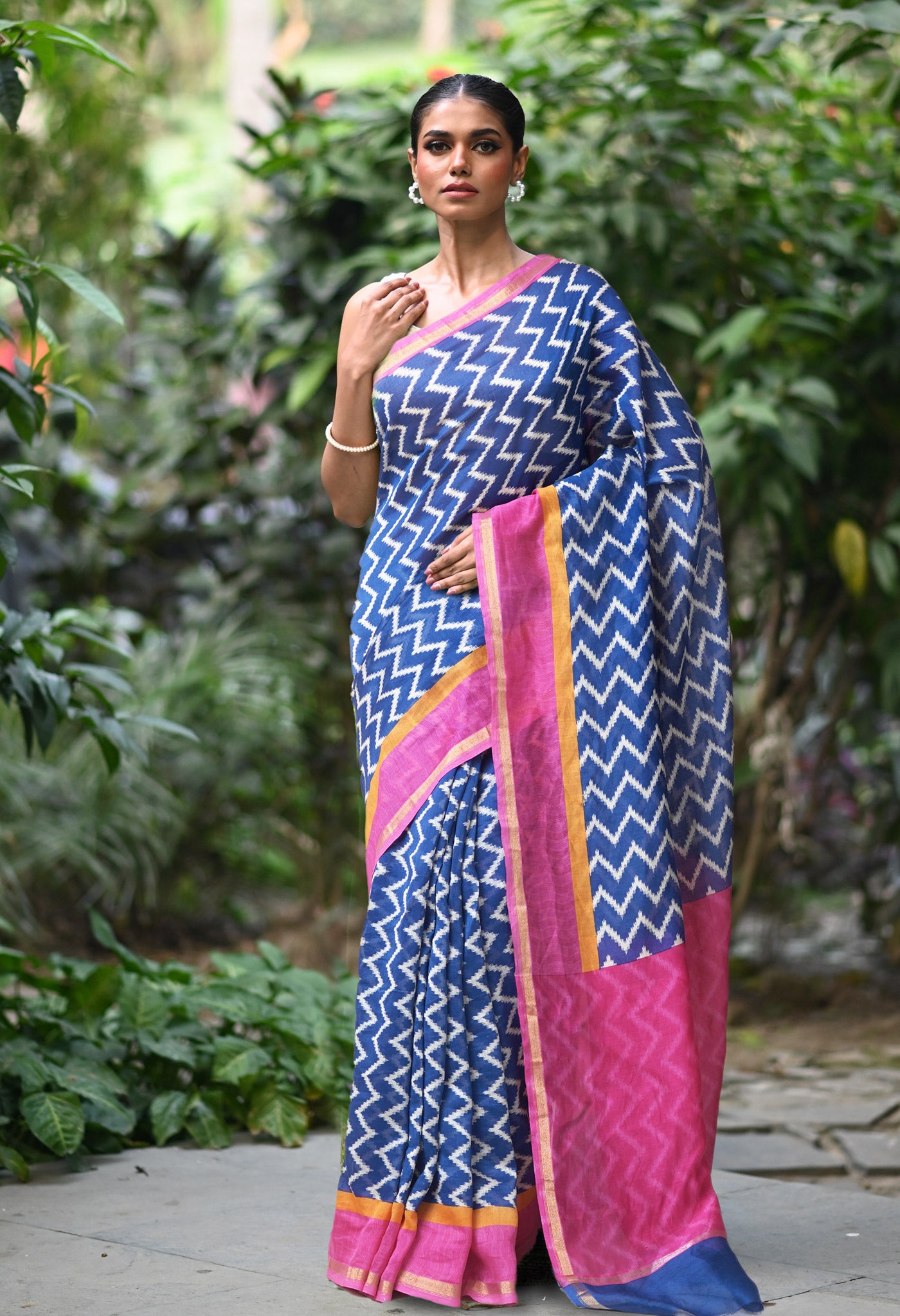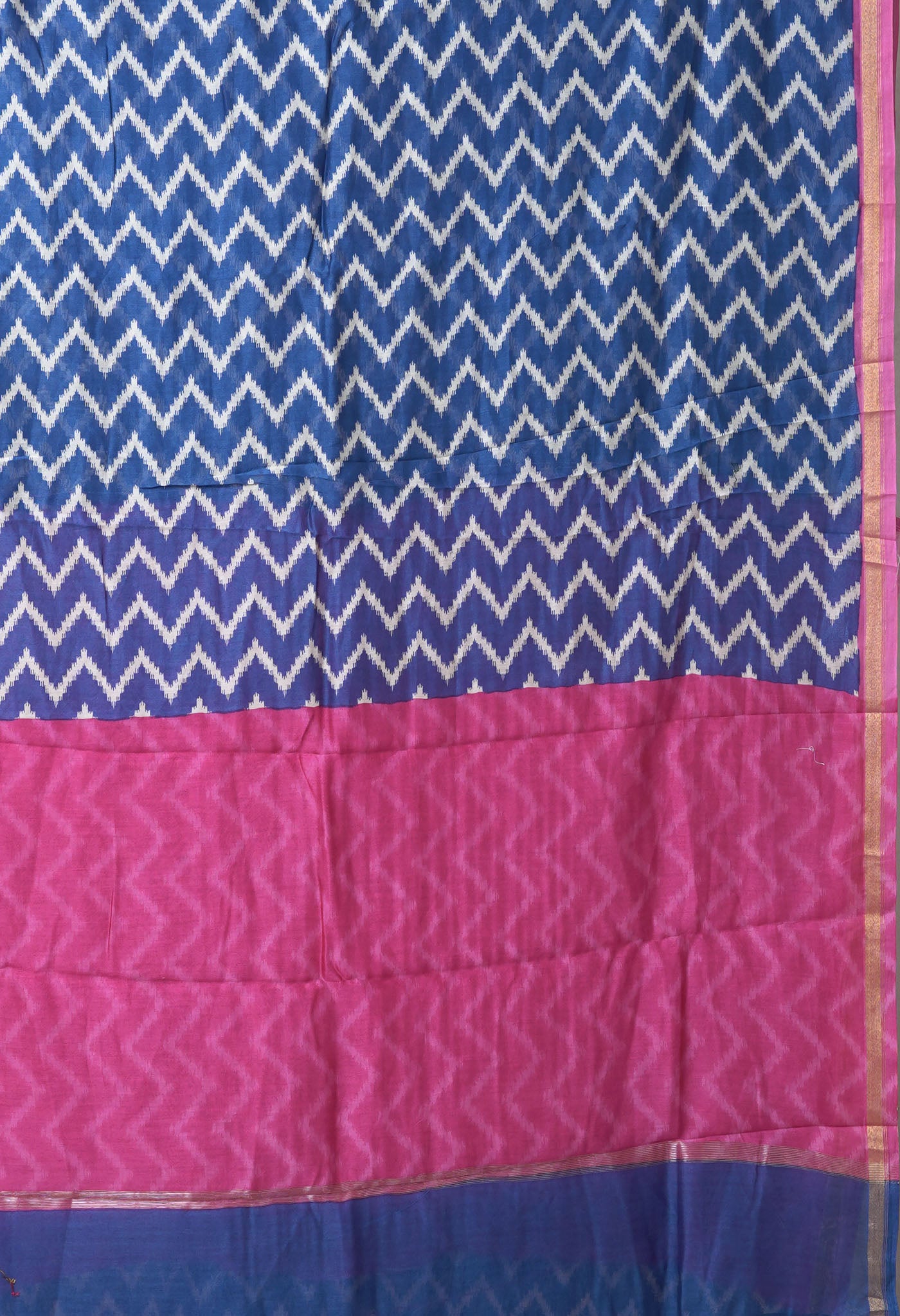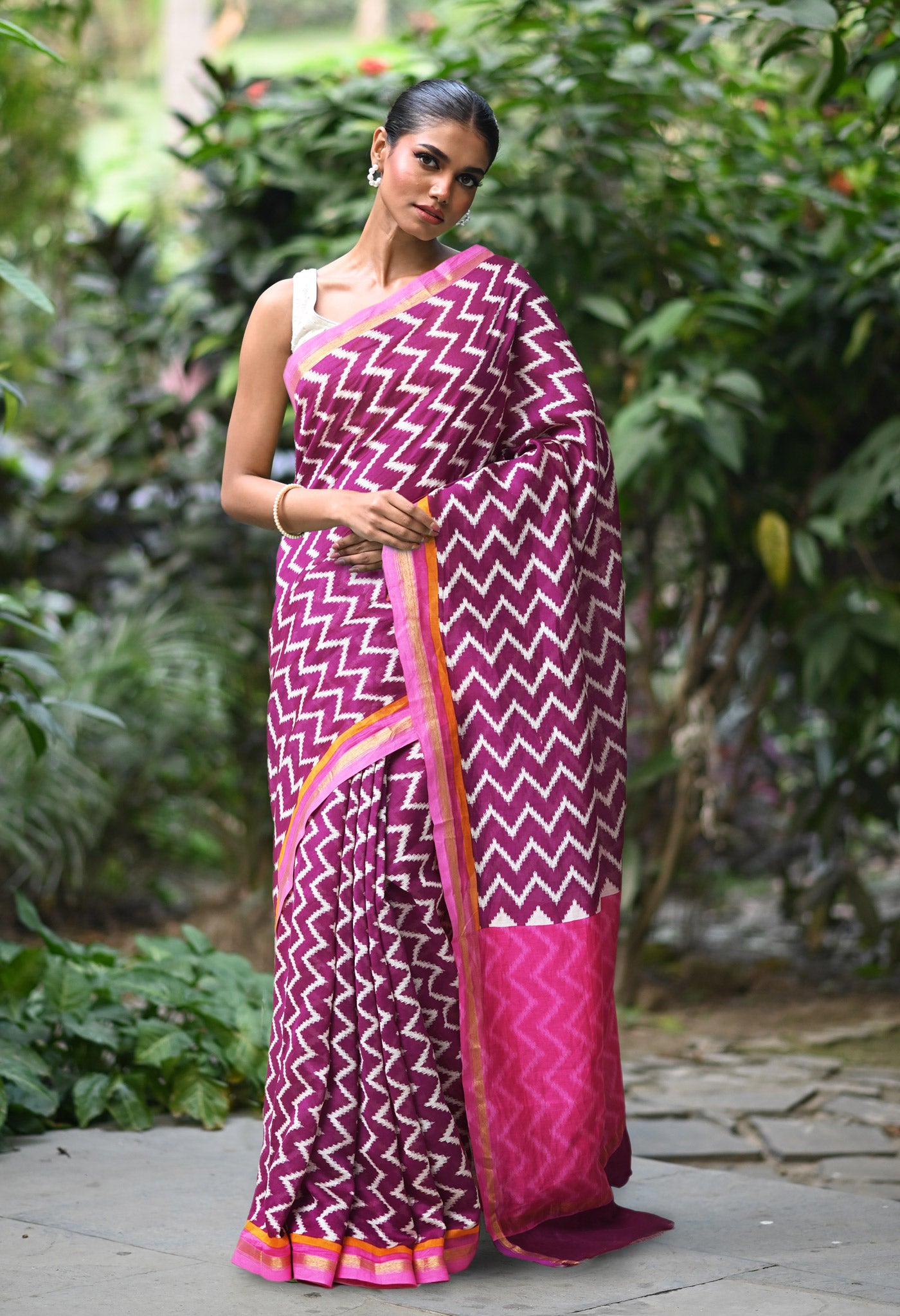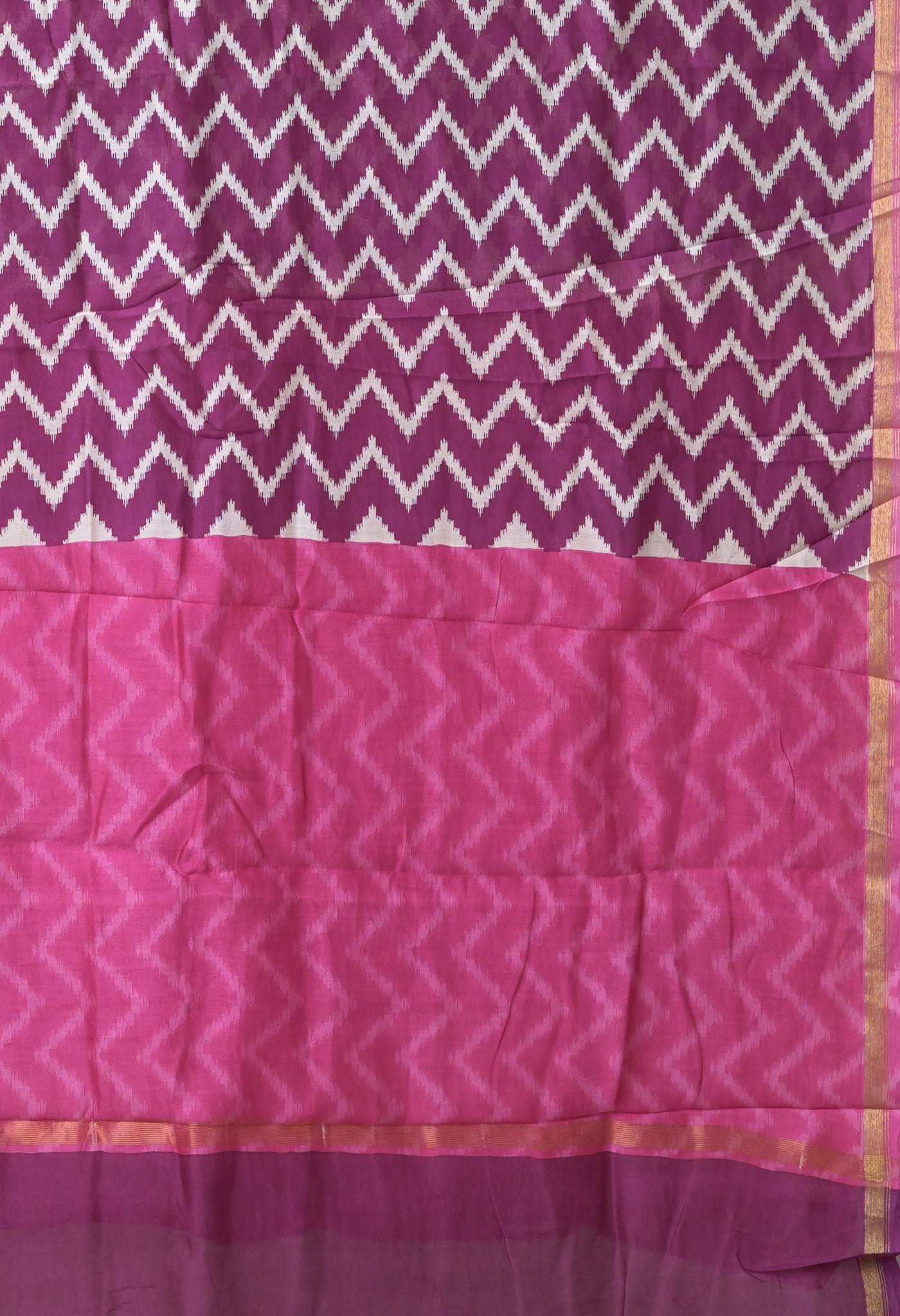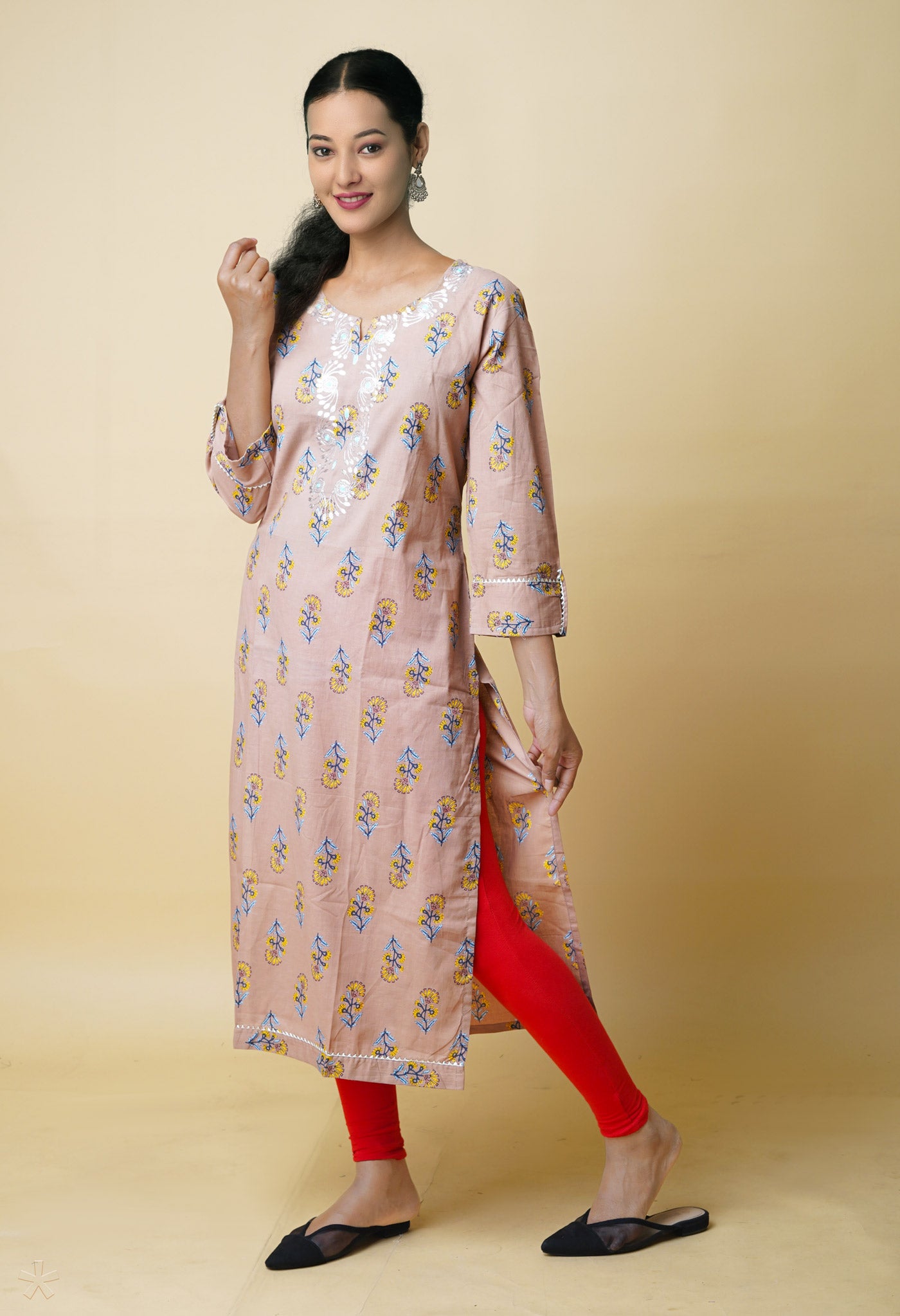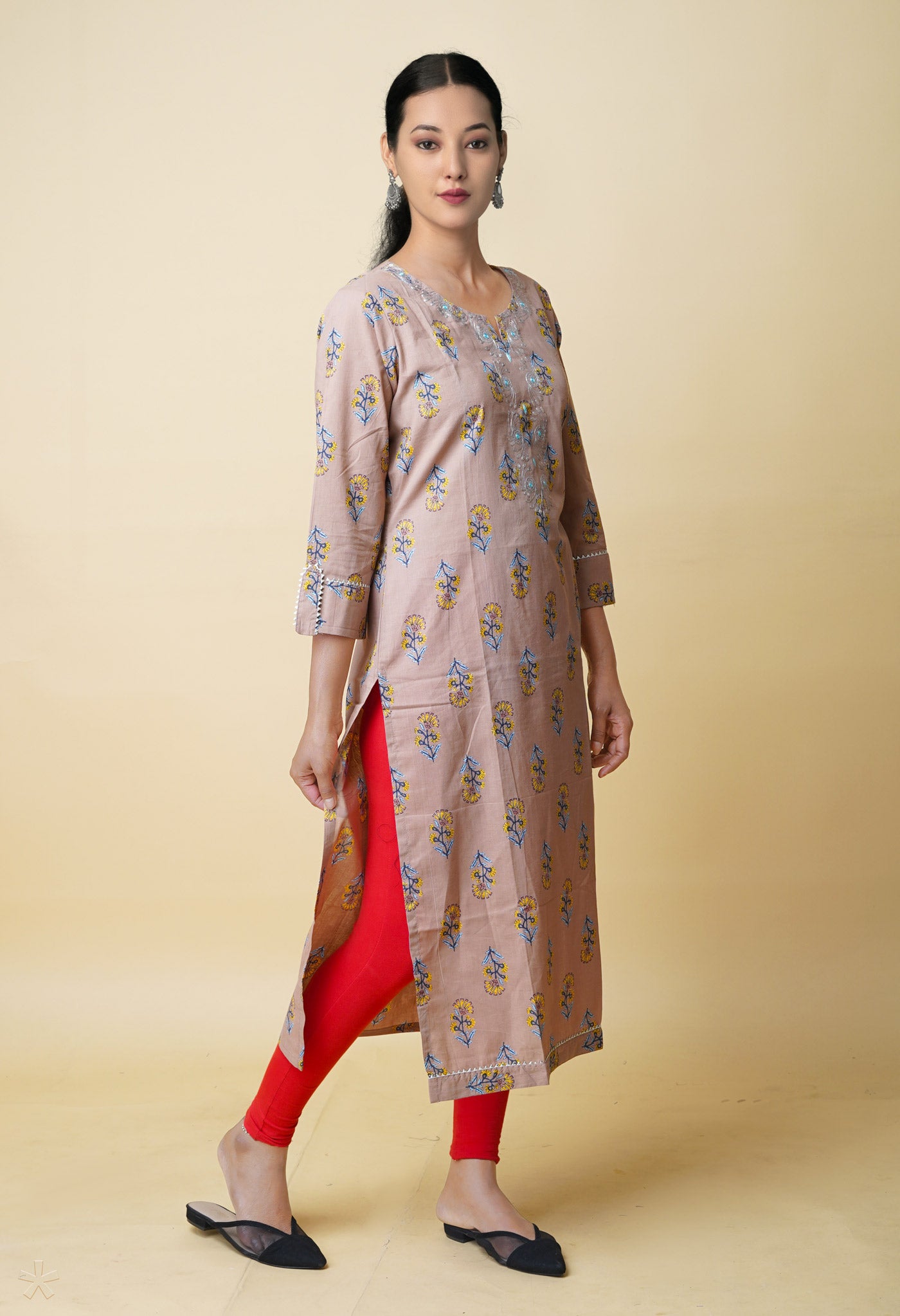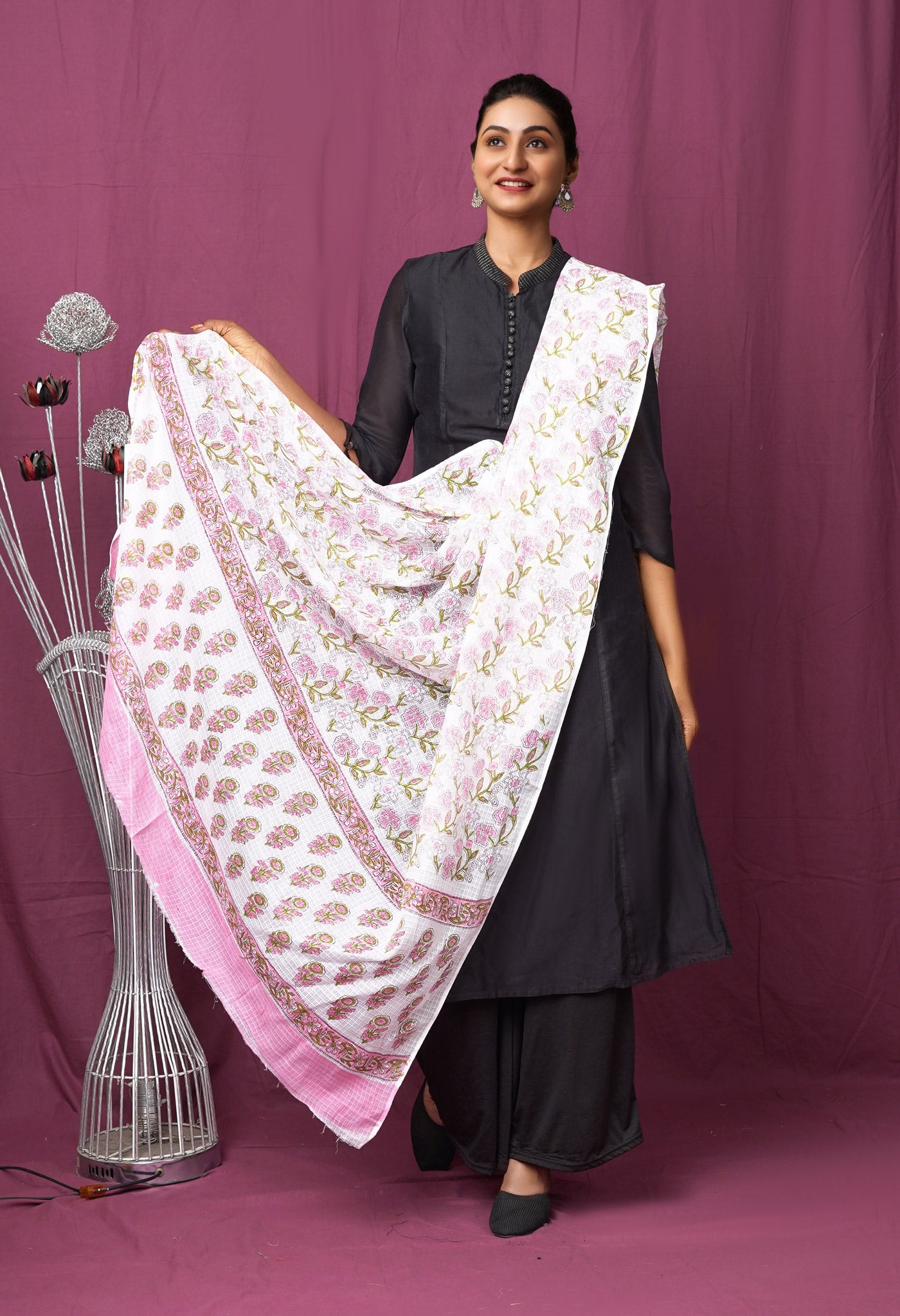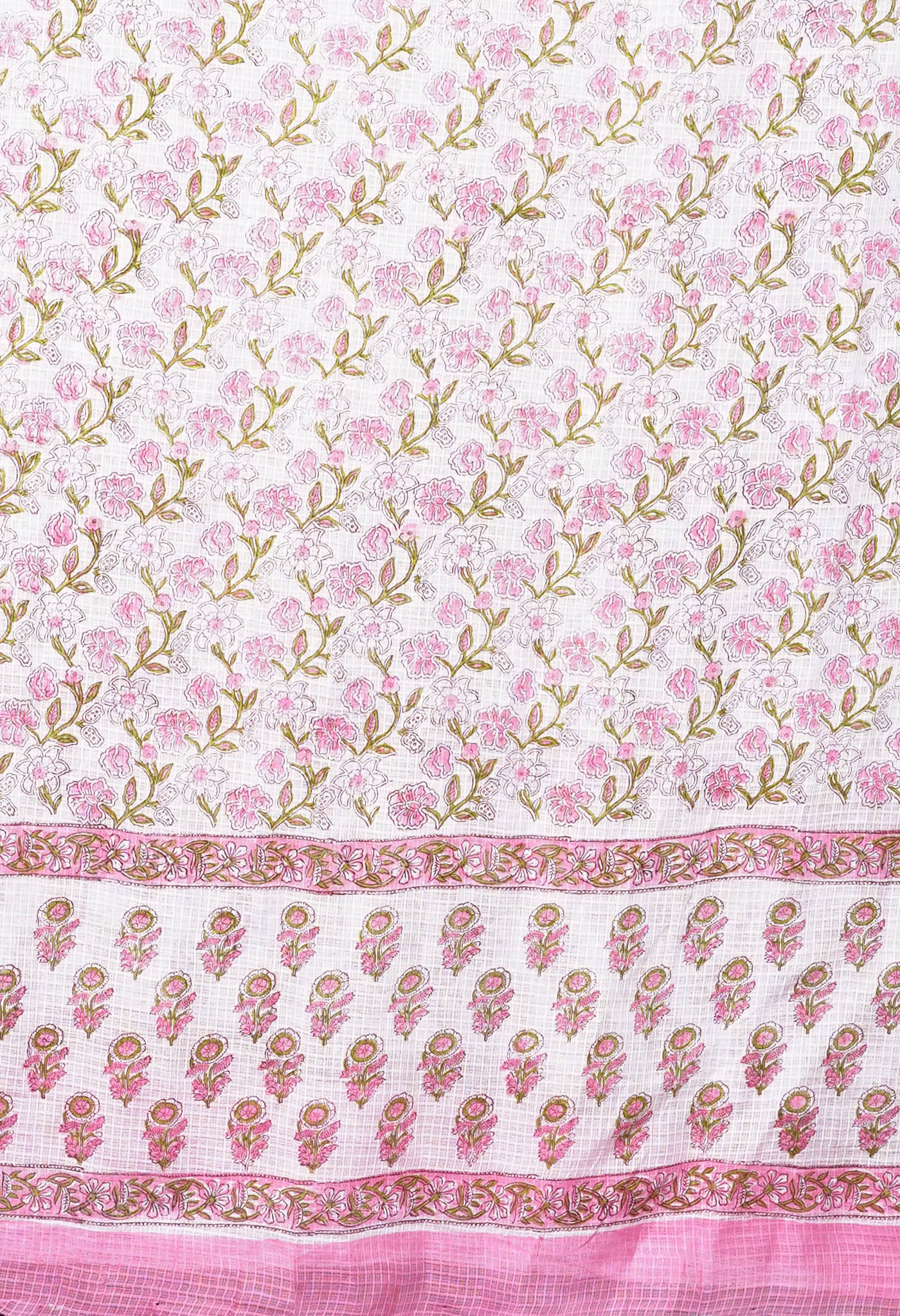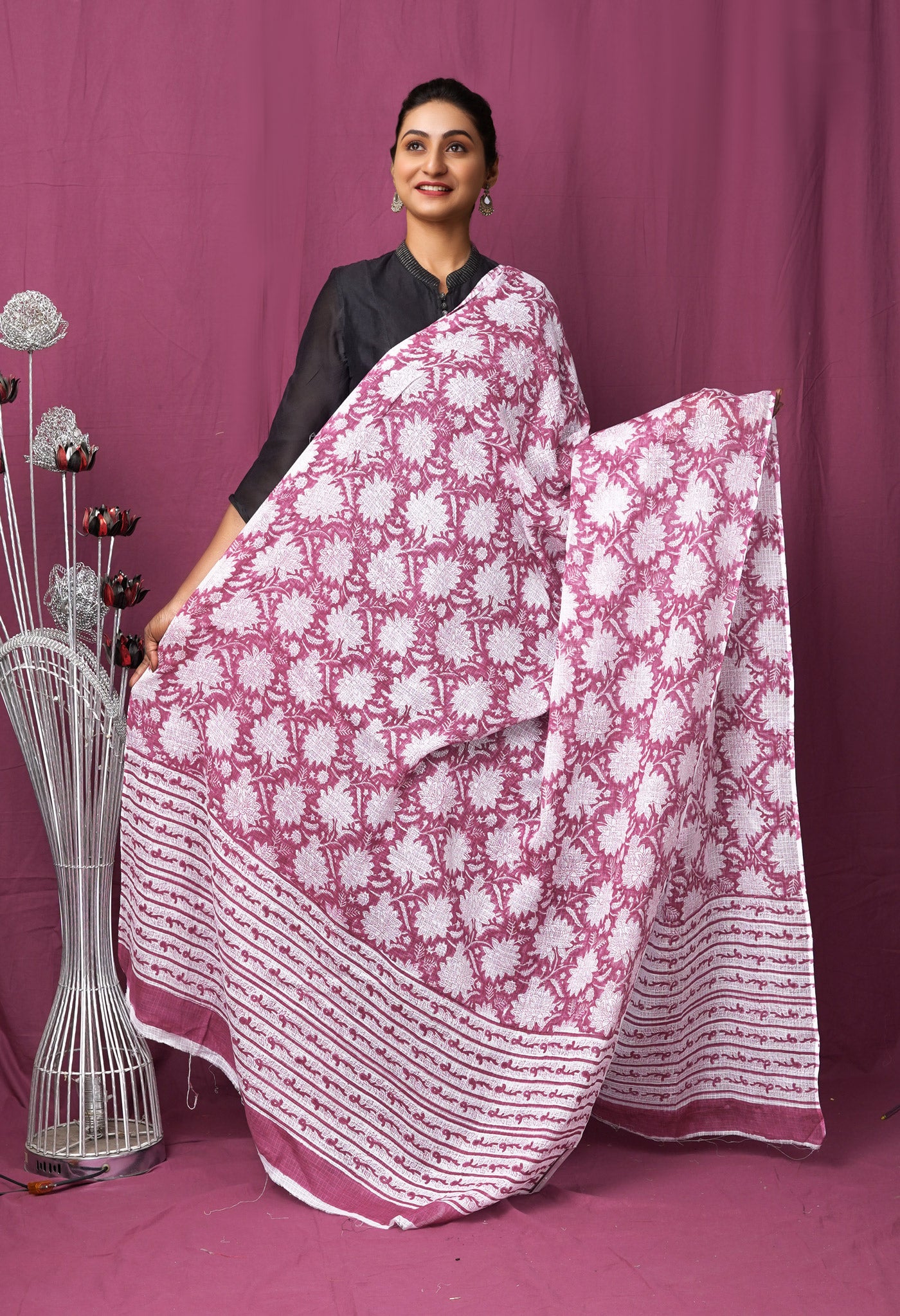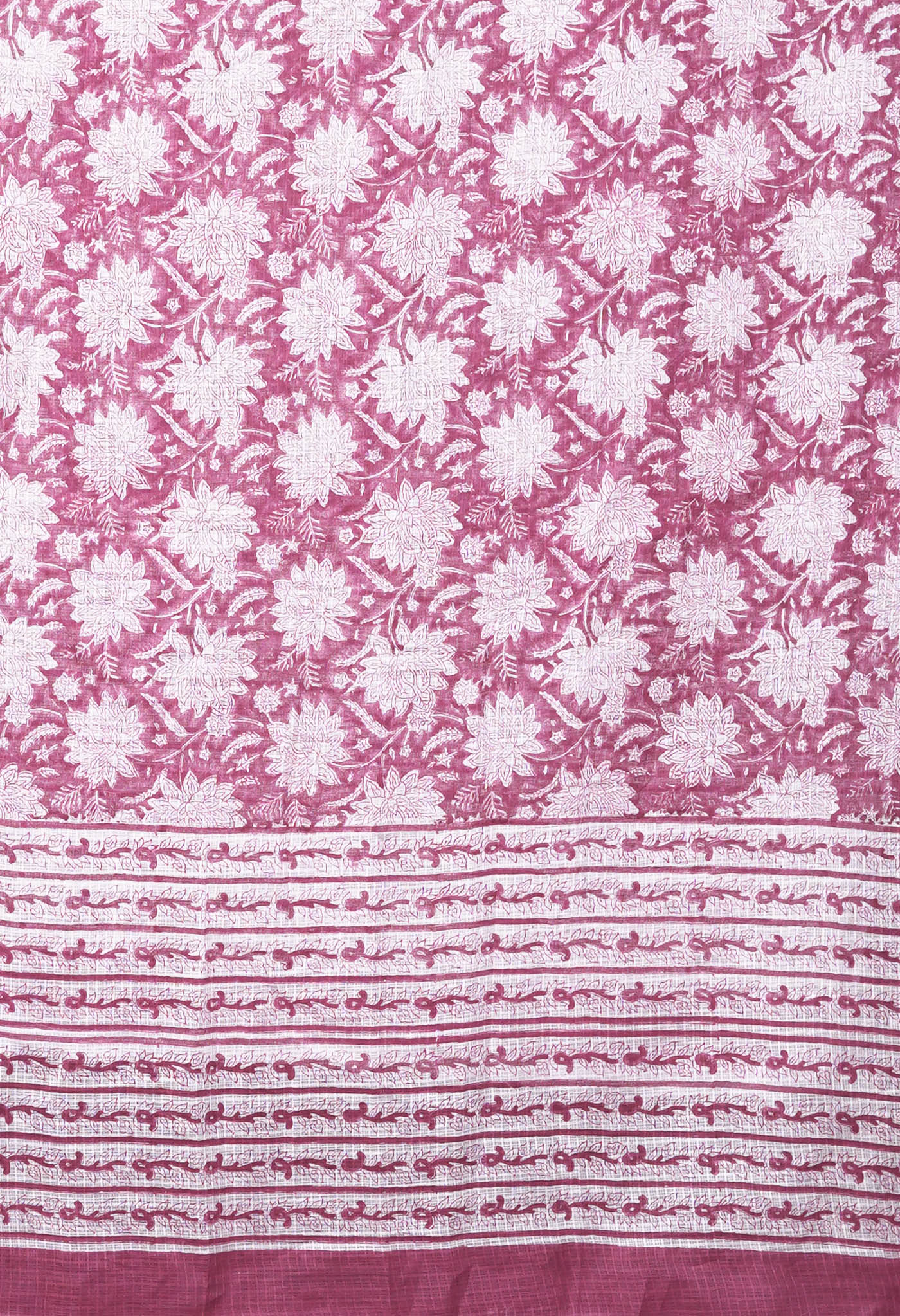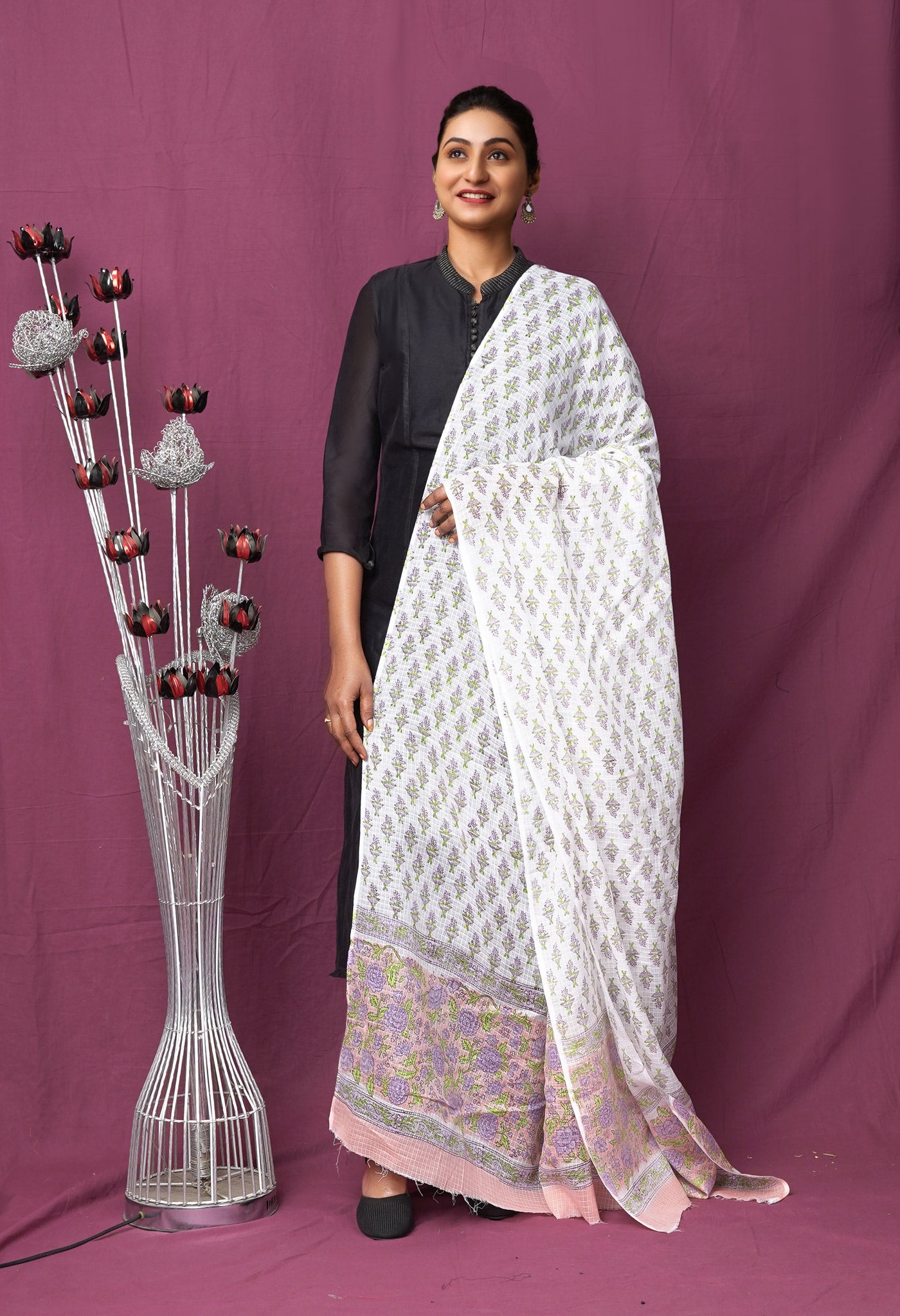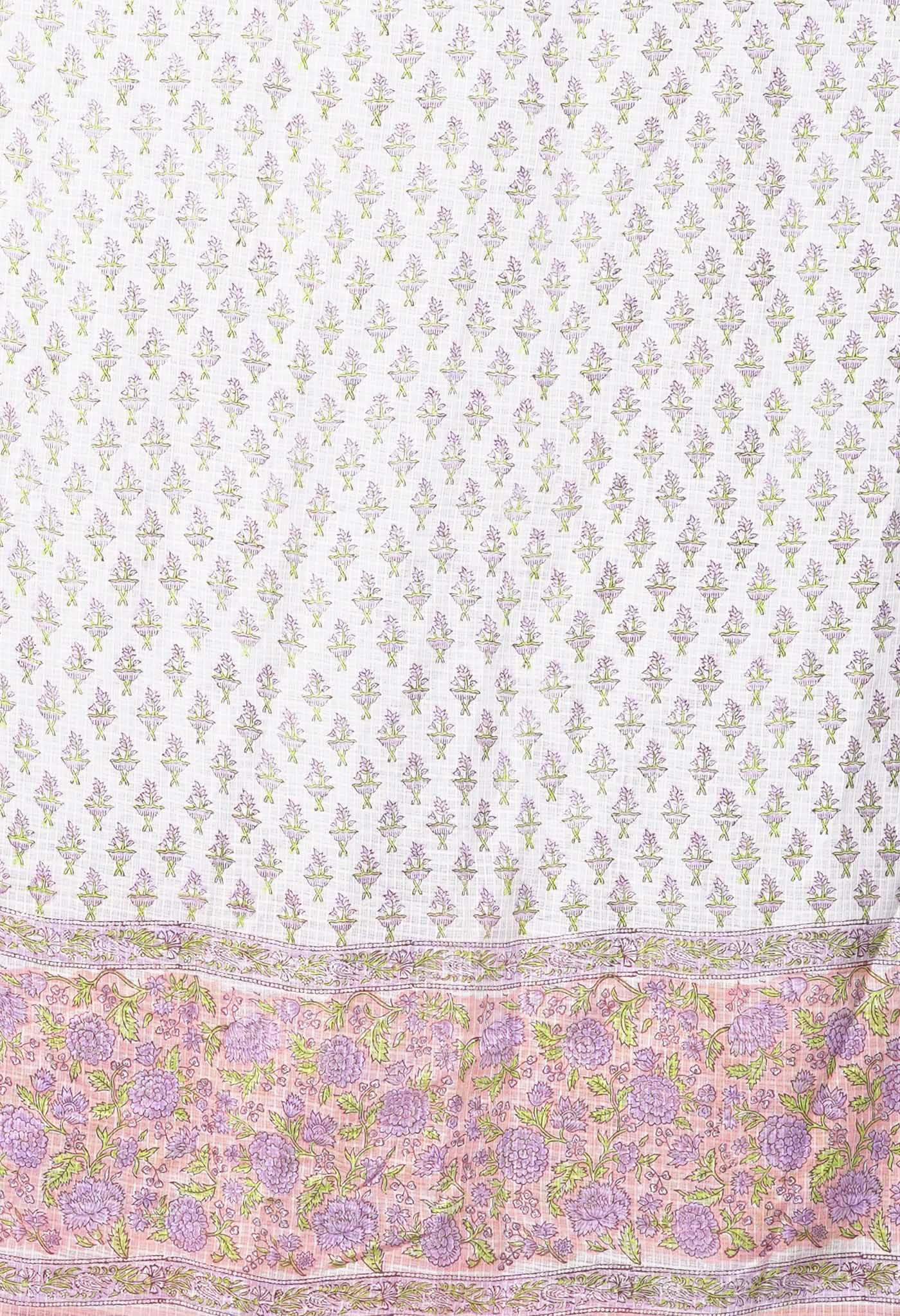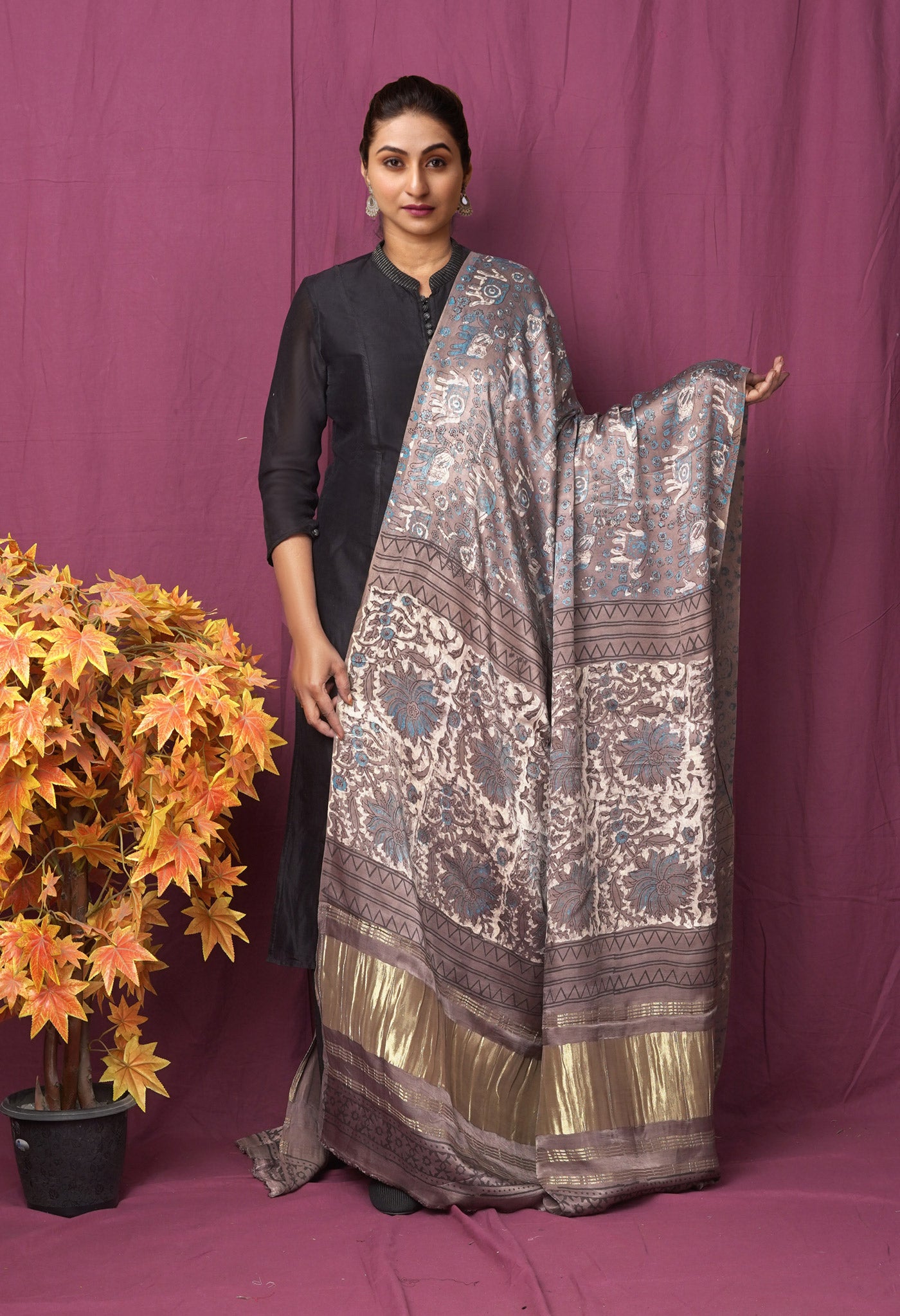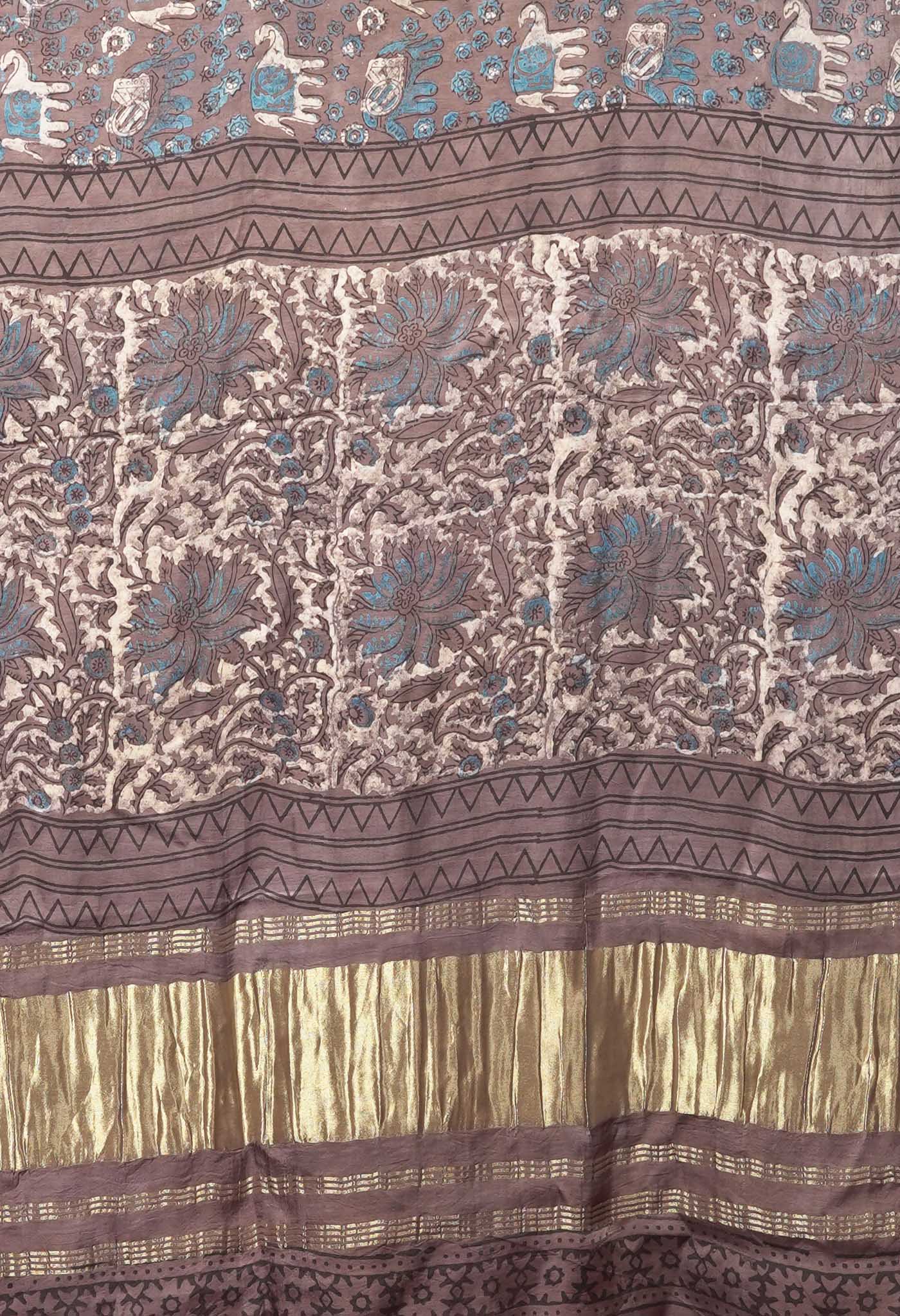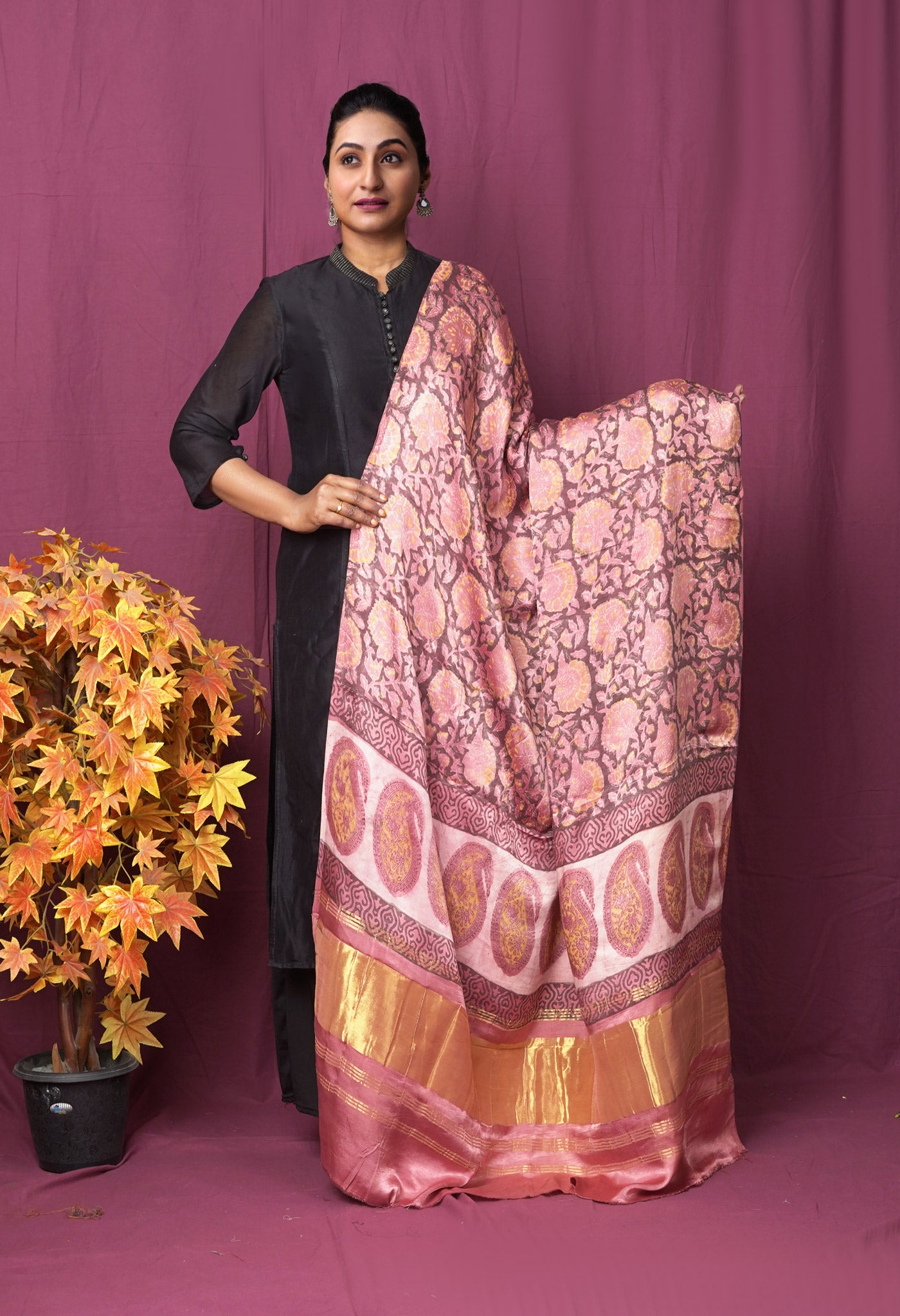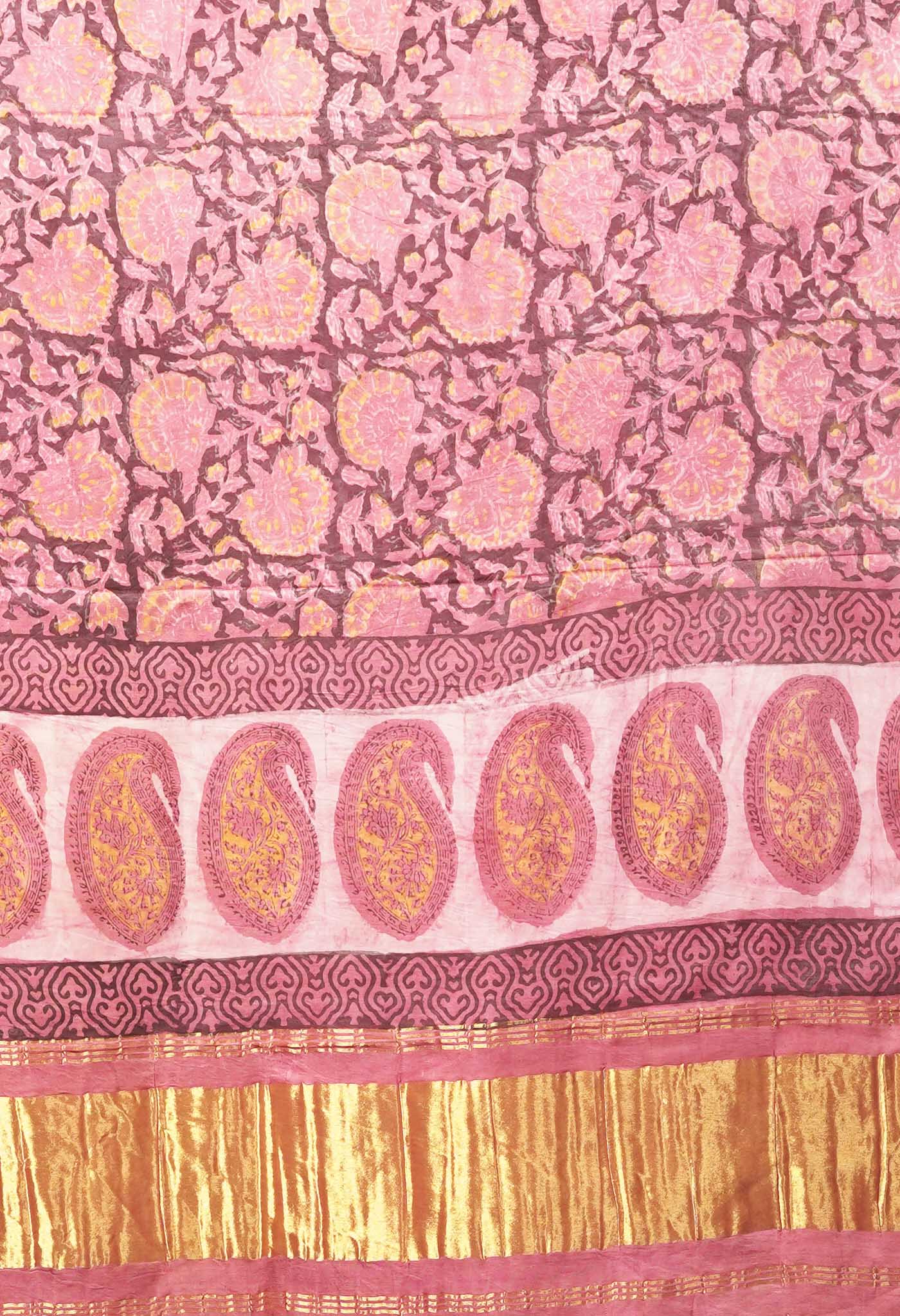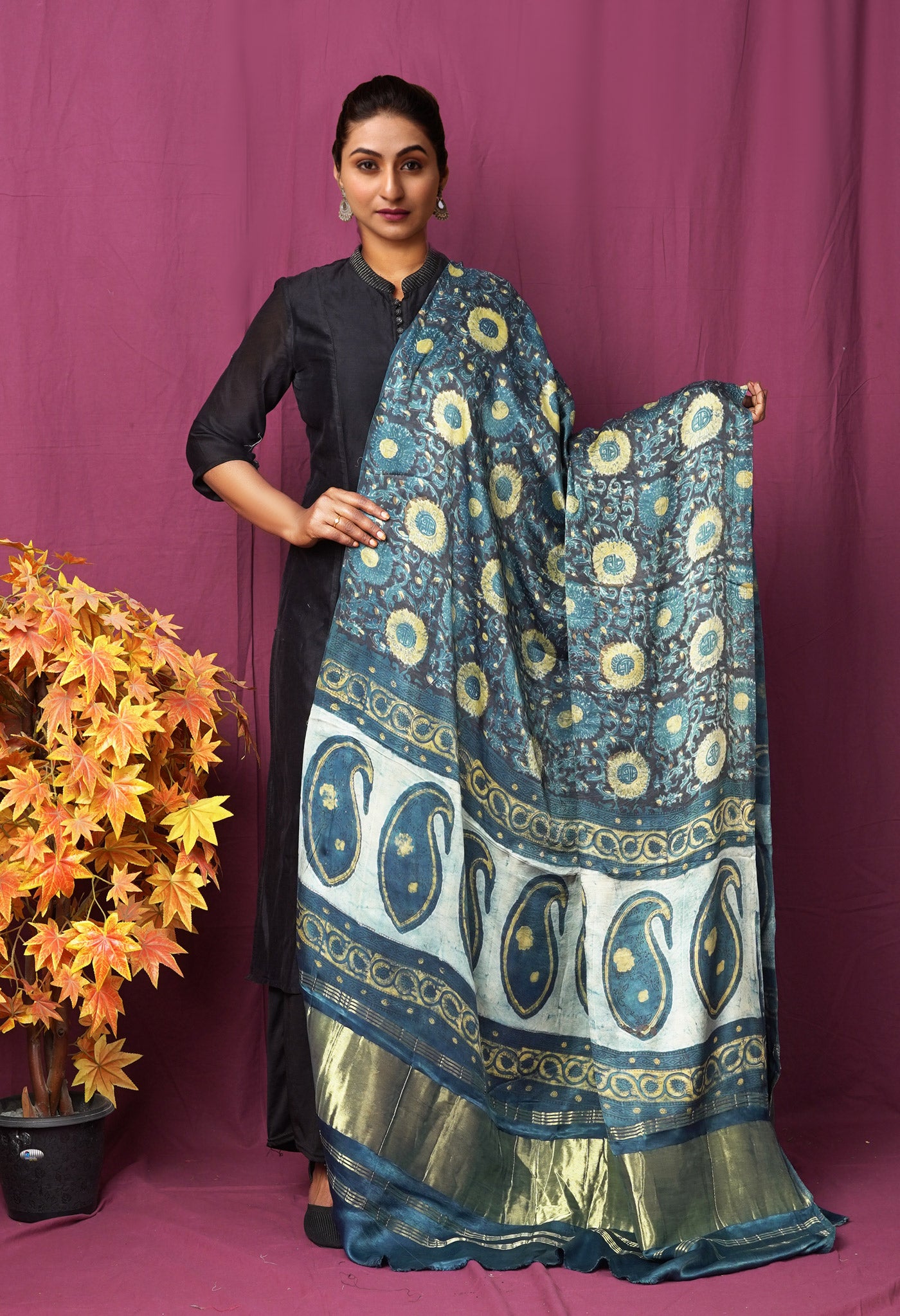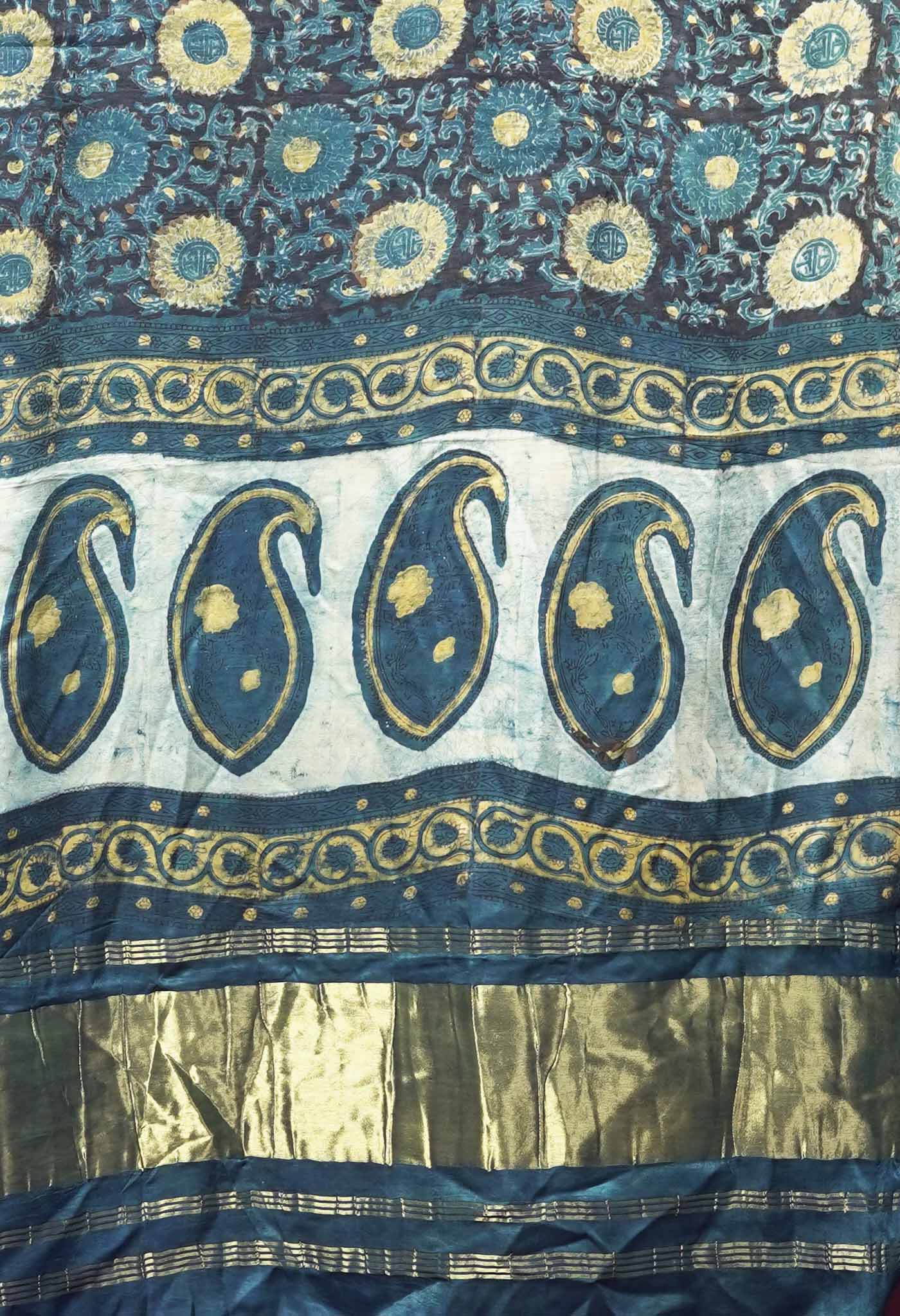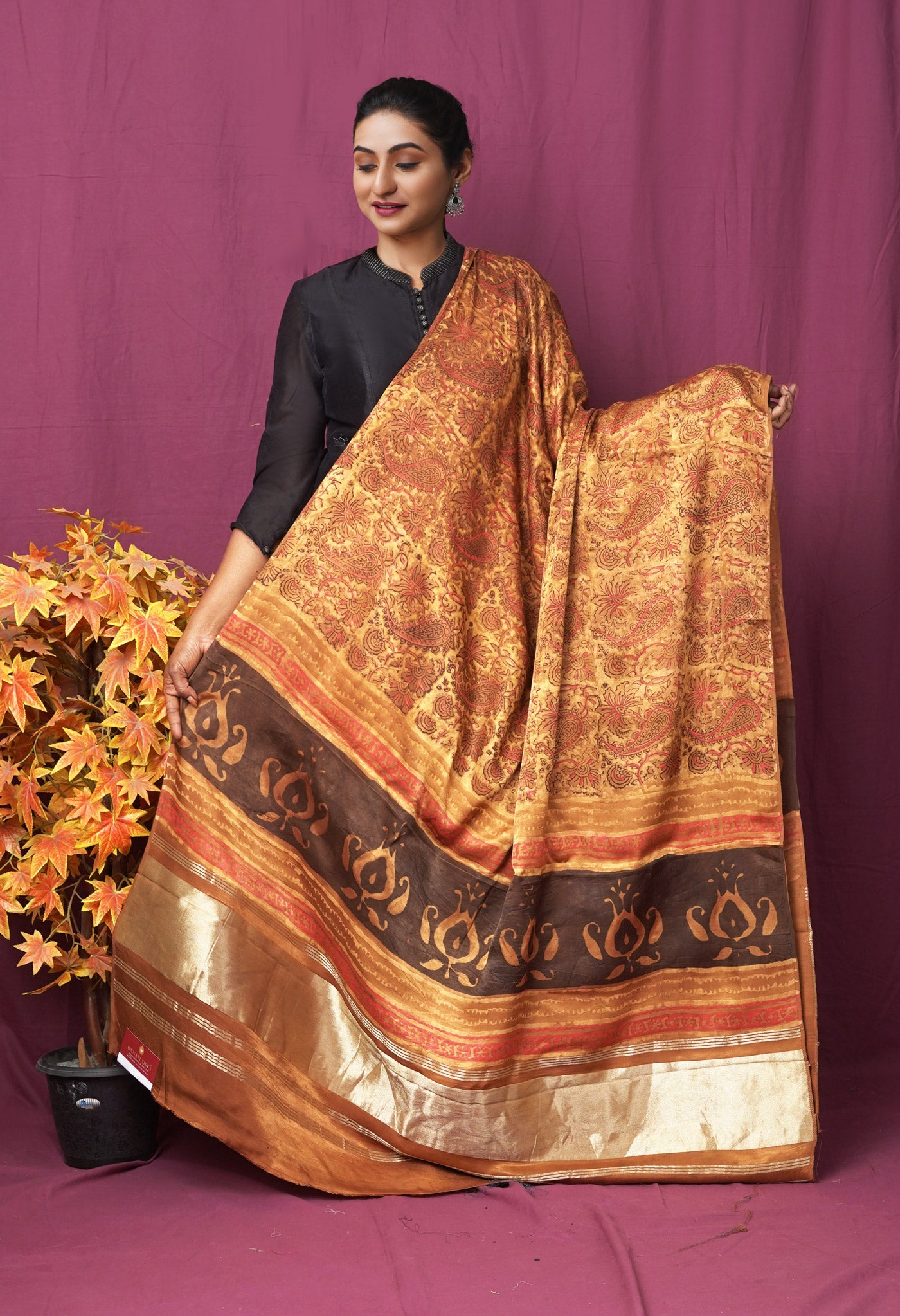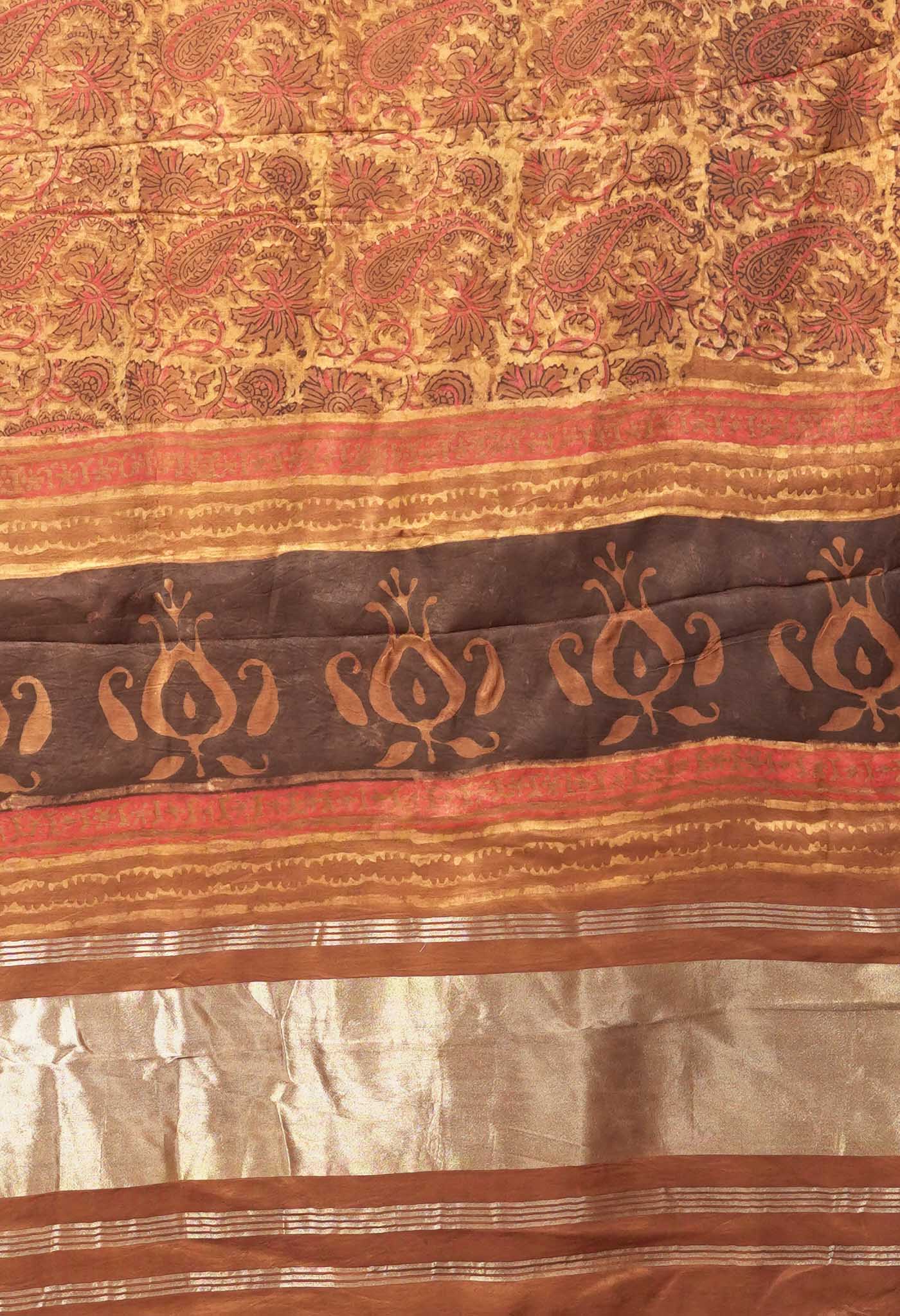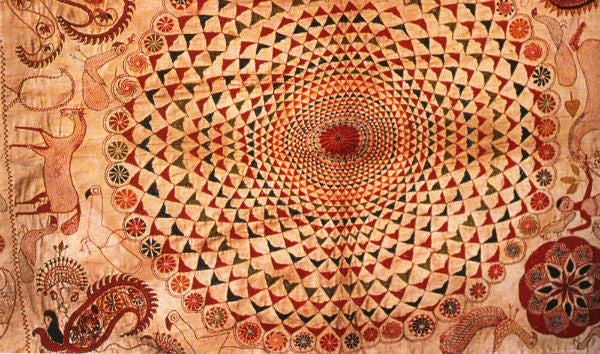
Beautiful thread magic on sarees from Kantha embroidery
Kantha is exquisite darning work or embroidery, once done out of necessity on used apparel; today a means of enhancing adornment on sarees and other fabrics.

[/vc_column_text][vc_column_text]
The beauty of Kantha
Imagine a snake leaving colour patterned trails on a field in the course of its travel across it. Kantha, the embroidery once from Murshidabad, in former Bengal, with its running stitch and other form of stitches in coloured thread on handloom sarees and other fabrics, is just about that and more.
This unique art that describes beautiful thread work has the running stitch bring out lovely endearing motifs of flora and fauna, simple geometrical shapes, scenes from everyday life, mythological themes and folklore in technicolor. The stitches for kantha work mostly comprise the running stitch, darning stitch, satin stitch and loop stitch forms of thread work, though the stem stitch is specifically for the coloured motifs. Kantha work gives the saree a wrinkled and wavy look that transforms plain into unique, average into extraordinary creations. Though the running stitch is most popular for its ease, other forms of stitch such as darning stitch, satin stitch and loop stitch are also used.
Color of the threads employed are based on the subject, the field or background (since it must contrast to stand out) and the appeal that it could possibly create.
Once specifically meant to indicate apparel adorned with Kantha work mostly, today Kantha also refers to fabrics with portions within the overall fabric including this lovely art that make it specially appealing.
[/vc_column_text][/vc_column][/vc_row][vc_row][vc_column width="1/4"][vc_single_image image="8140" img_link_target="_self"][vc_single_image image="8088" img_link_target="_self"][/vc_column][vc_column width="3/4"][vc_column_text]
Kantha types
Based on the use of the fabric, Kantha is divided into seven different types.
Lep kantha – done on warm covering material over which simple designs would be executed.
Sujani kantha – done on cloths used for ceremonial occasions
Baiton kantha - done on book coverings and coverings for other valuable objects
Oaar kantha – decorating pillow covers
Archilata kantha – done for covers or mirrors and other toilet accessories.
Durjani/thalia kantha – kantha on small rectangles with borders folding to form a cloth wallet.
Rumal kantha – cloth used as wipes or plate coverings
[/vc_column_text][/vc_column][/vc_row][vc_row][vc_column width="1/1"][vc_column_text]
Origin of Kantha
Long back in rural Bengal and Bangladesh, Kantha work was embroidery done on used apparel, renewing their looks and  extending their life. Kantha Work was essentially thread work done on old sarees, dhotis and other apparel. A unique art from Murshidabad in former Bengal, popular and practised in current West Bengal, especially in Bholpur, and Bihar, it is a running stitch on the sarees in the form of motifs to enhance the look of the used fabrics it adorned. Bengali women used to mend their old clothes by making designs from a strand of thread off the colorful border of their saris. A craft of skill widely practised by women in rural Bengal, it knew no boundaries of class or status. Be it a woman in a small village or a rich landlady, both devoted their skills and talents to use Kantha for their clothing, either out of need or just out of creative interest.
extending their life. Kantha Work was essentially thread work done on old sarees, dhotis and other apparel. A unique art from Murshidabad in former Bengal, popular and practised in current West Bengal, especially in Bholpur, and Bihar, it is a running stitch on the sarees in the form of motifs to enhance the look of the used fabrics it adorned. Bengali women used to mend their old clothes by making designs from a strand of thread off the colorful border of their saris. A craft of skill widely practised by women in rural Bengal, it knew no boundaries of class or status. Be it a woman in a small village or a rich landlady, both devoted their skills and talents to use Kantha for their clothing, either out of need or just out of creative interest.
Kantha stitching was employed primarily in the making of quilts, known as Nakshi Kantha. Women used old saris and other cloth, layering them with the kantha stitch to make small blankets and bedspreads, for children.
[/vc_column_text][/vc_column][/vc_row][vc_row][vc_column width="1/1"][vc_column_text]
More about Kantha
Kantha got a commercial boost in the 80’s when an NGO saw fit to see this extraordinary skill get its rightly due. A lot of exhibitions were held and training classes conducted for willing learners enamoured by this extraordinary skill and in due course the world got the first glimpses of this unique art. Further it was explored for commercial transactions wherein the women would fulfil orders and get paid for it. This led to a new wave of art inspired practitioners and soon it became a respectable means of earning a modest income.
In today’s times, rural women still see it as a means to supplement the meagre income of their households. Many do a lot of kantha work for traders in Kolkata.The price of kantha embroidered sarees depends on the cost of the fabric and the patterns used to decorate them. Borders and Pallus of Sarees especially adorned by exquisite Kantha work set of unique appeal.
Kantha embellishes a wide range of garments such as sarees, dupattas, shirts, bedding and a variety of other fabrics in cotton and silk. Old saris and dhotis are transformed by kantha work to serve as gifts for beloved ones even today.
In a village called Katna, Kantha is a way of life; a tradition that is still followed meticulously. Kanthas are prepared for small babies to lie on, wedding kanthas are made by mothers and gifted to their daugthers and kantha is present on the ceremonial cloth meant for funeral rites.
[/vc_column_text][vc_gallery type="image_grid" interval="3" images="8097,8081,8099,8079,8080,8098,8078,8083,8148,8100" onclick="link_image" custom_links_target="_self"][/vc_column][/vc_row][vc_row][vc_column width="1/1"][vc_column_text]
Kantha and Unnati Silks
Unnati has always held Kantha work dear and the art special. The spread of skill of Kantha work from Bengal to Bhagalpur, Bihar and Jammu and Kashmir has given rise to many fusion ideas. Traditional handloom sarees like a Pashmina cotton saree or a lustrous Tussar silk one has floral spreads or large eye-catching mango bootis in Kantha that make them spell-binding.
Thematic representations from the epics and other lore on tribal art silk sarees have created stunning Kantha-worked sensations. There are sarees where the field or body would have one kind of Kantha, the borders some other form and the pallu a third, creating awesome appeal. Colors well-chosen, combined with astute perception and thread work executed flawlessly on fine handloom offerings, leave the viewer awed by the finesse and craftsmanship.
Easily Kantha sarees are fabrics that range from the casual wear to ones for those exclusive occasions like weddings, festivals and grand parties.
[/vc_column_text][/vc_column][/vc_row][vc_row][vc_column width="1/1"][vc_gallery type="image_grid" interval="3" images="8119,8117,8115,8113,8114,8118,8120,8116,8122,8123" onclick="link_image" custom_links_target="_self"][vc_column_text]Kantha is about tradition. Kantha is about art. Kantha is about appeal. A blend of everything put together in a fine seamless representation of what is truly and remarkably, a symbol of fusion fashion. [/vc_column_text][/vc_column][/vc_row]

